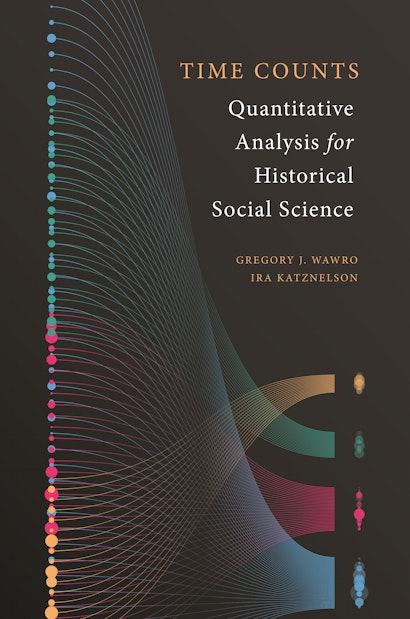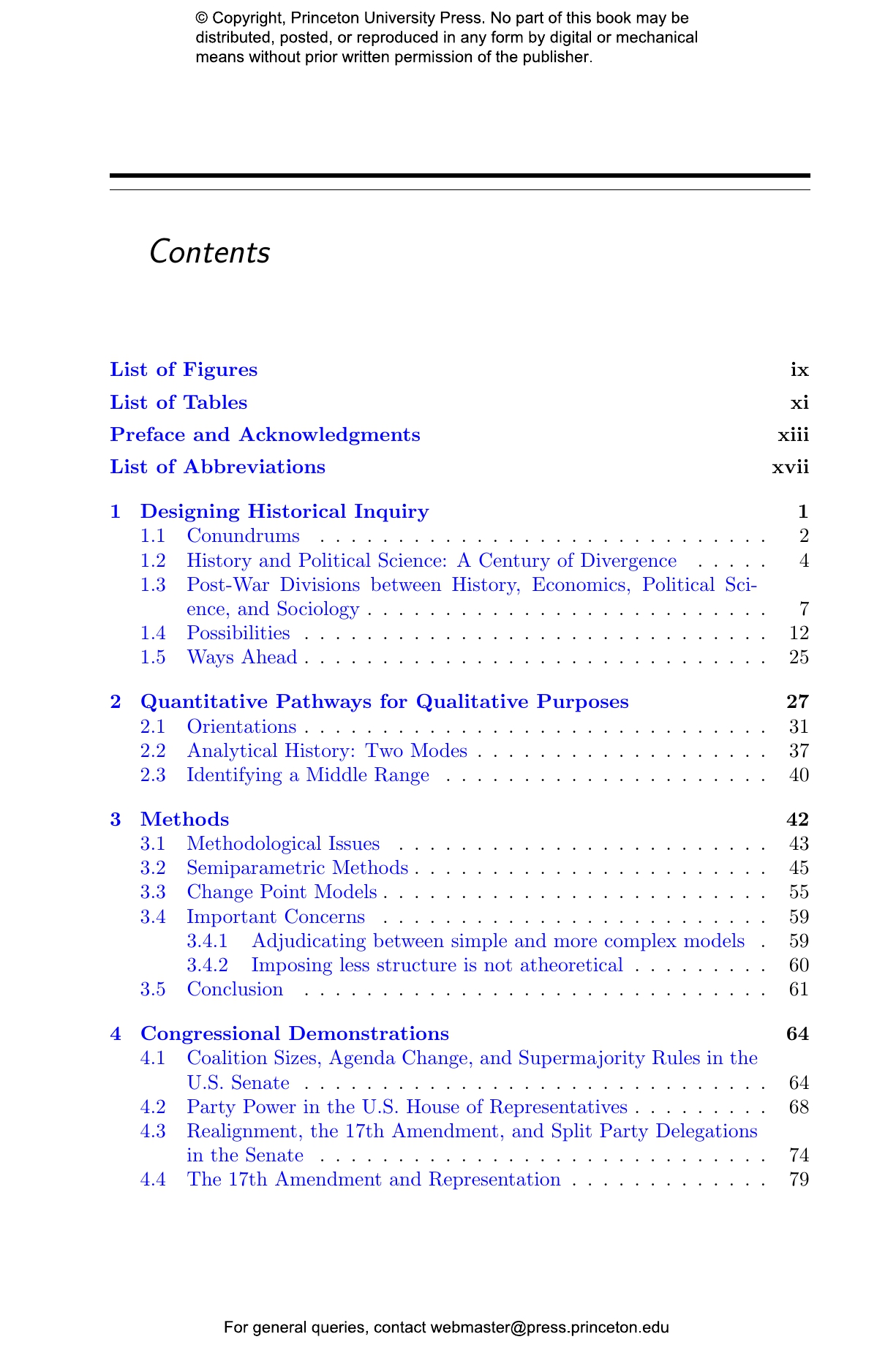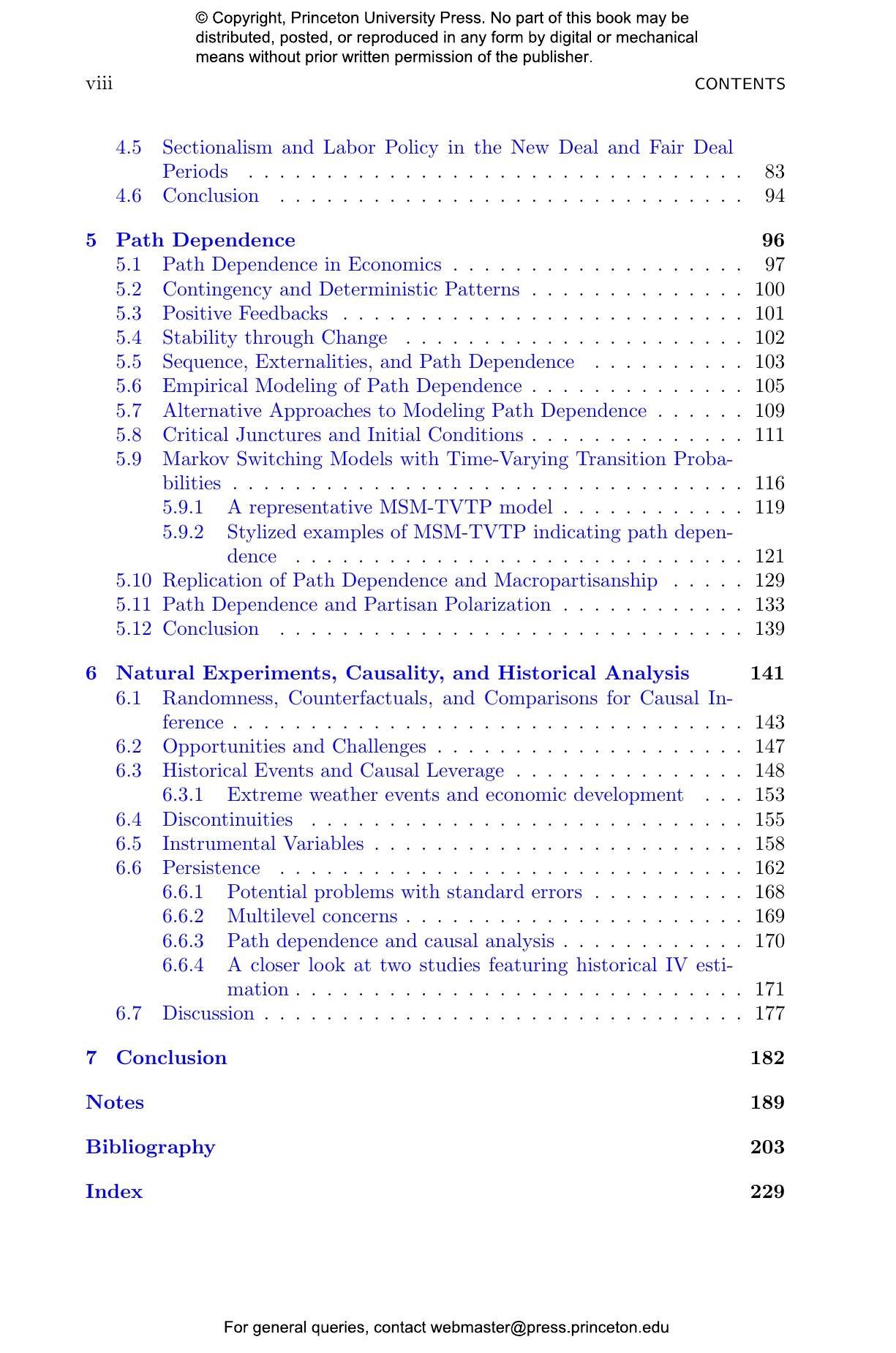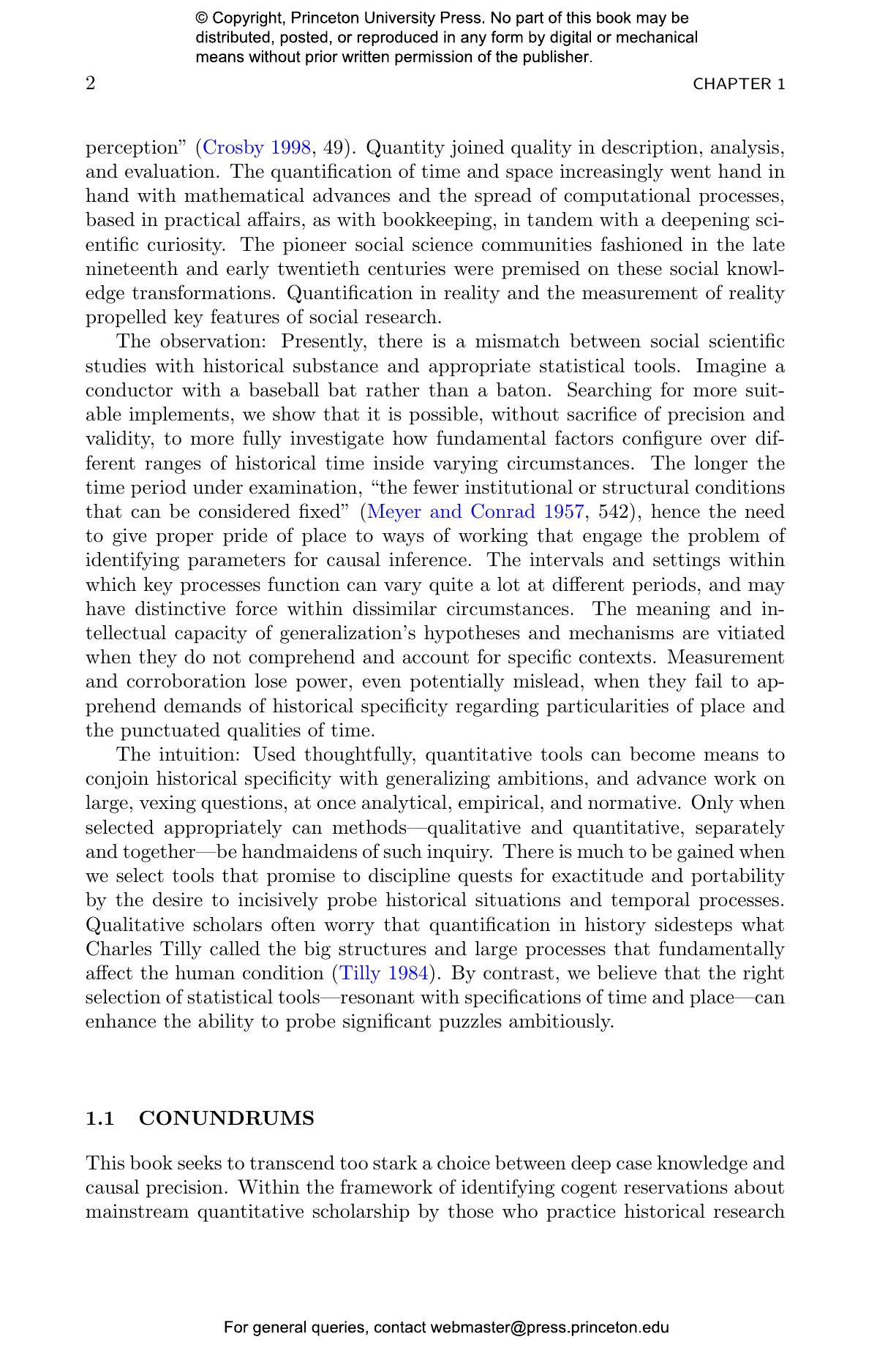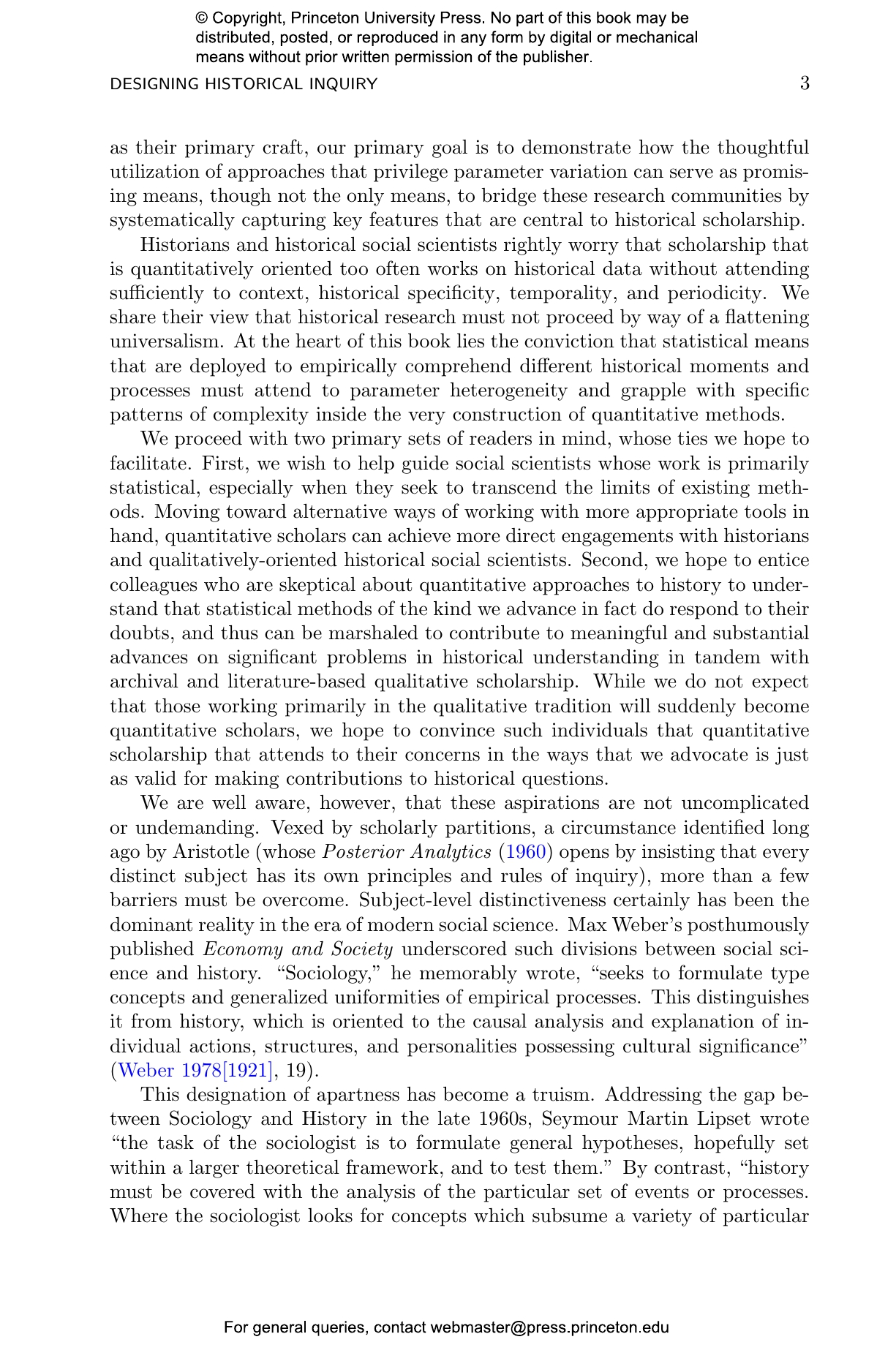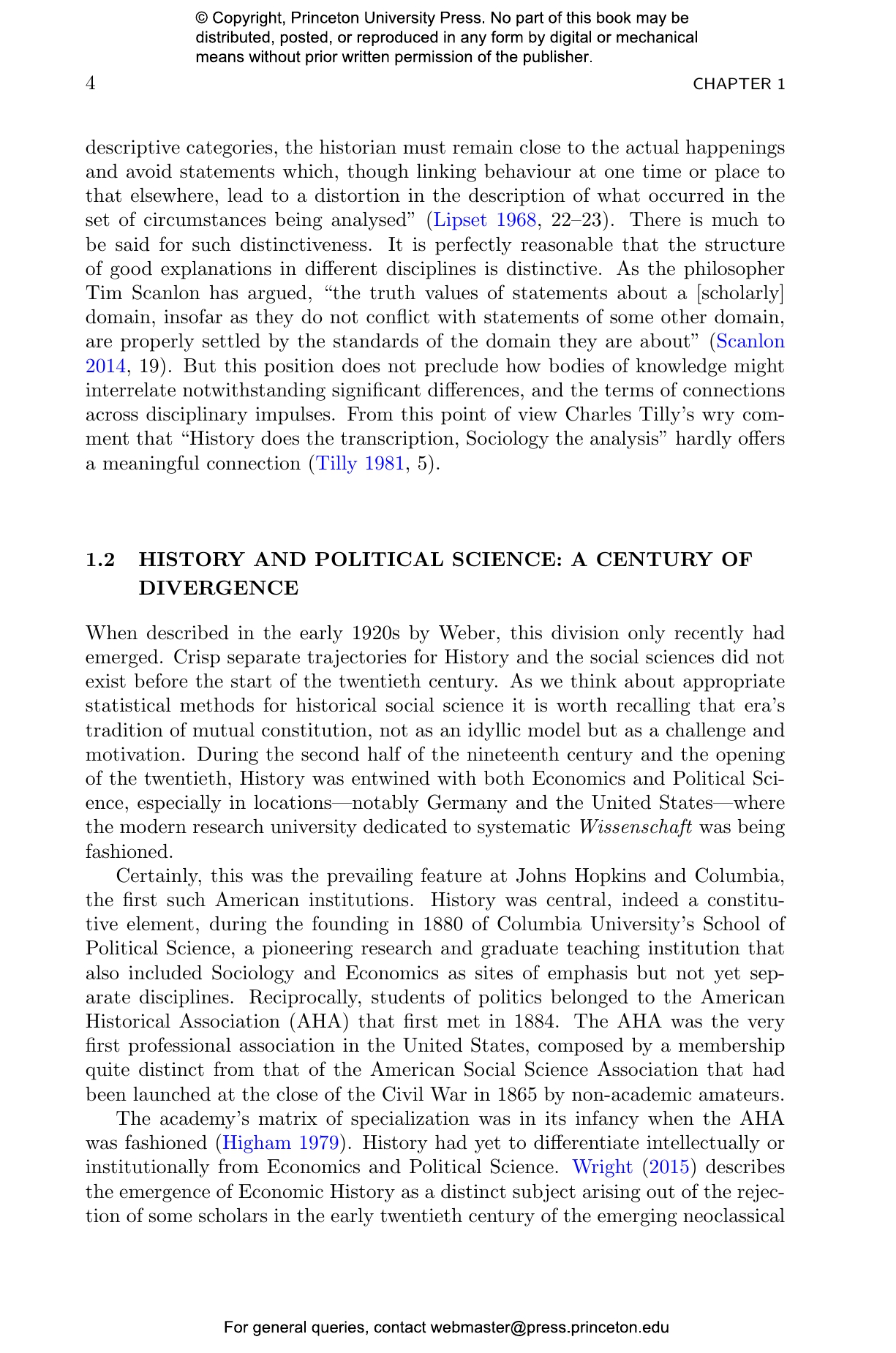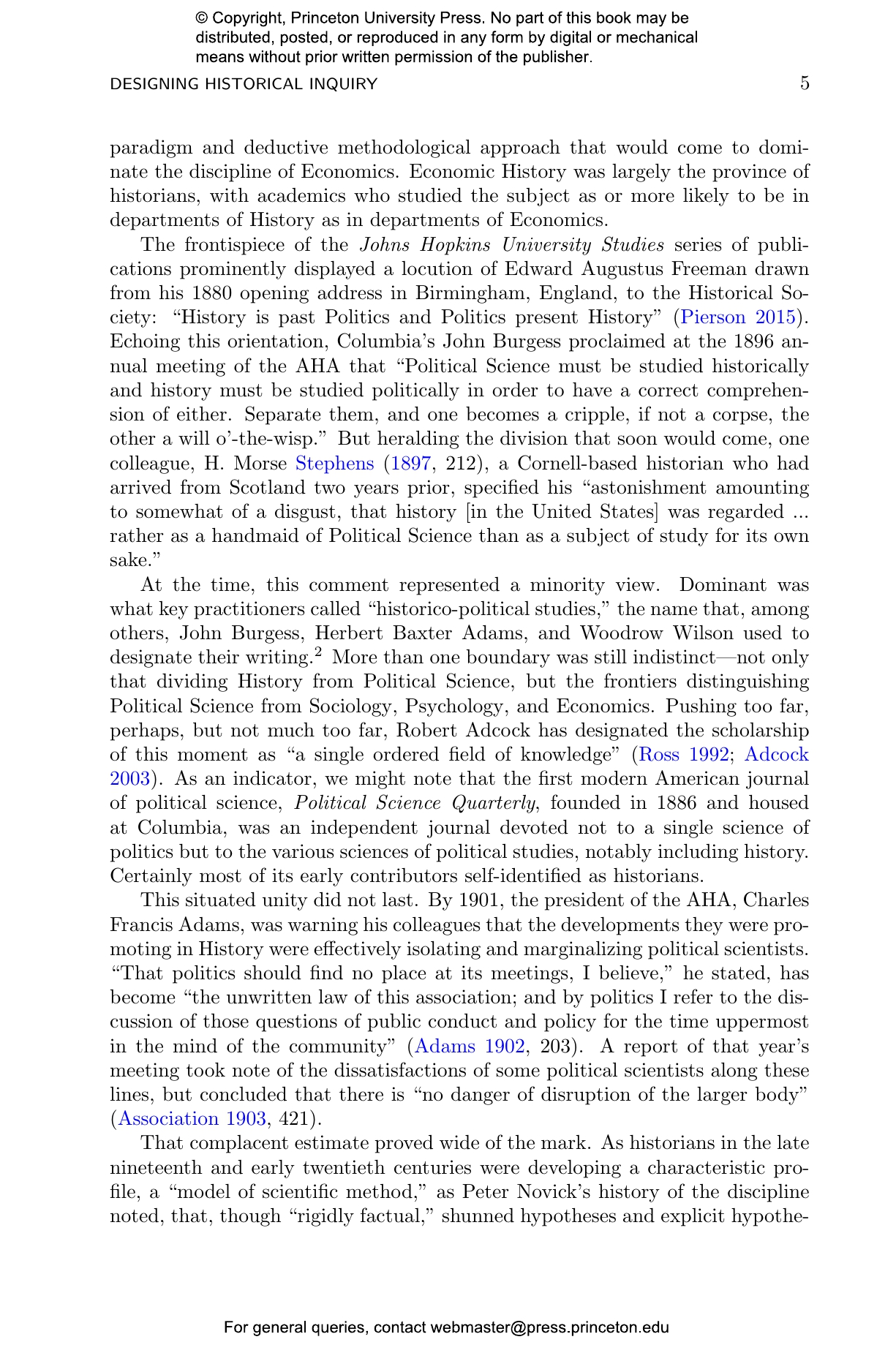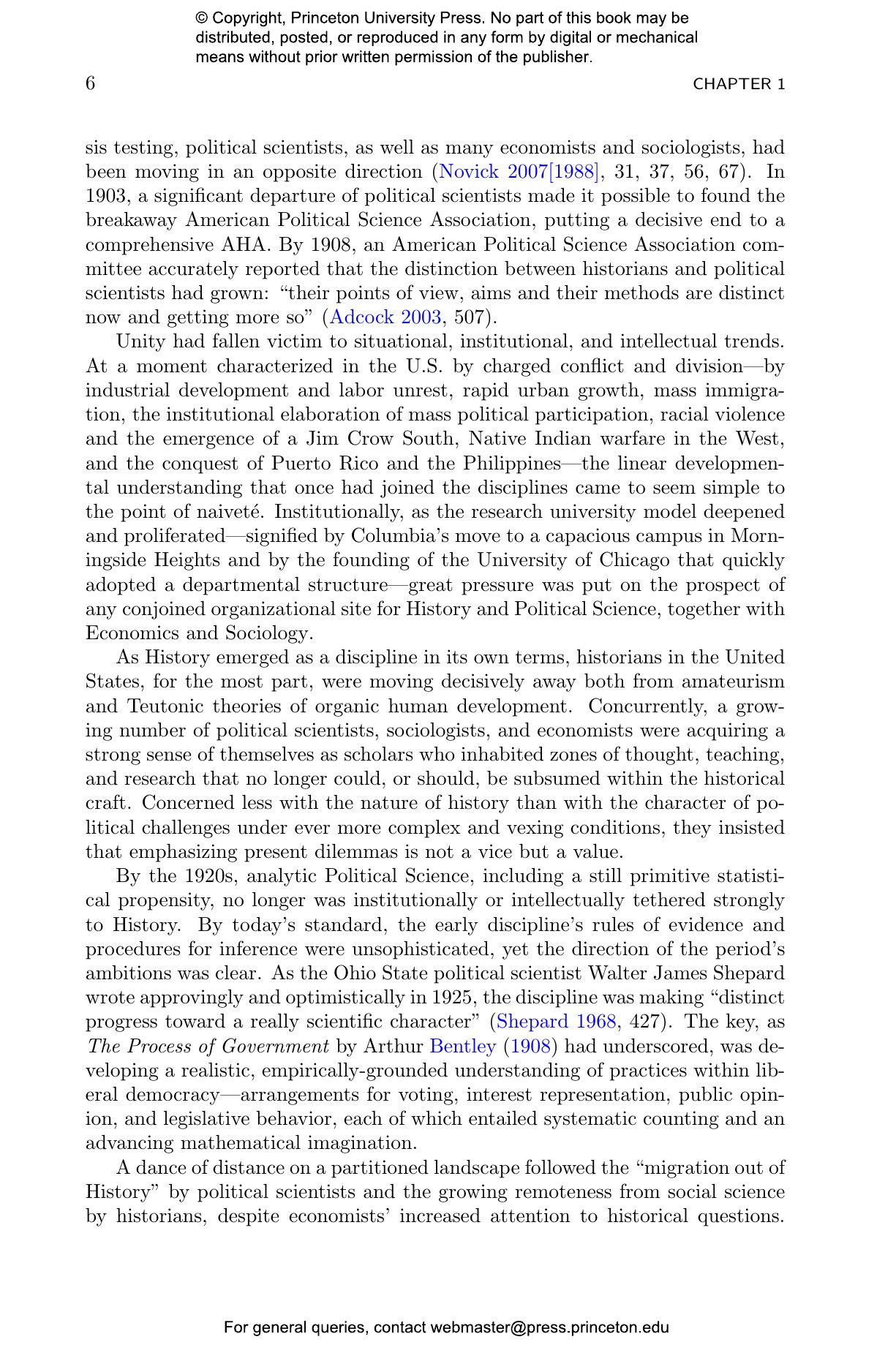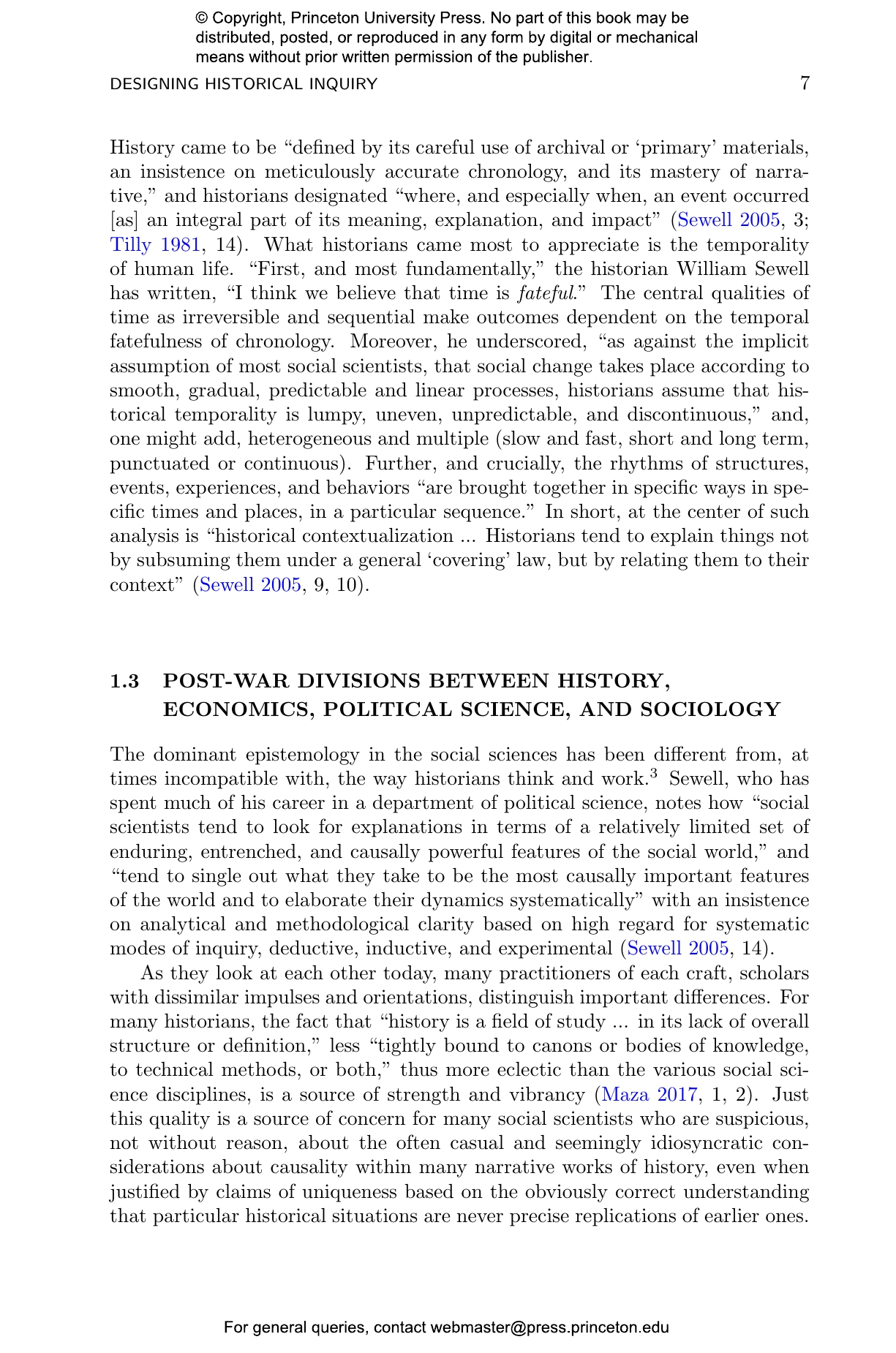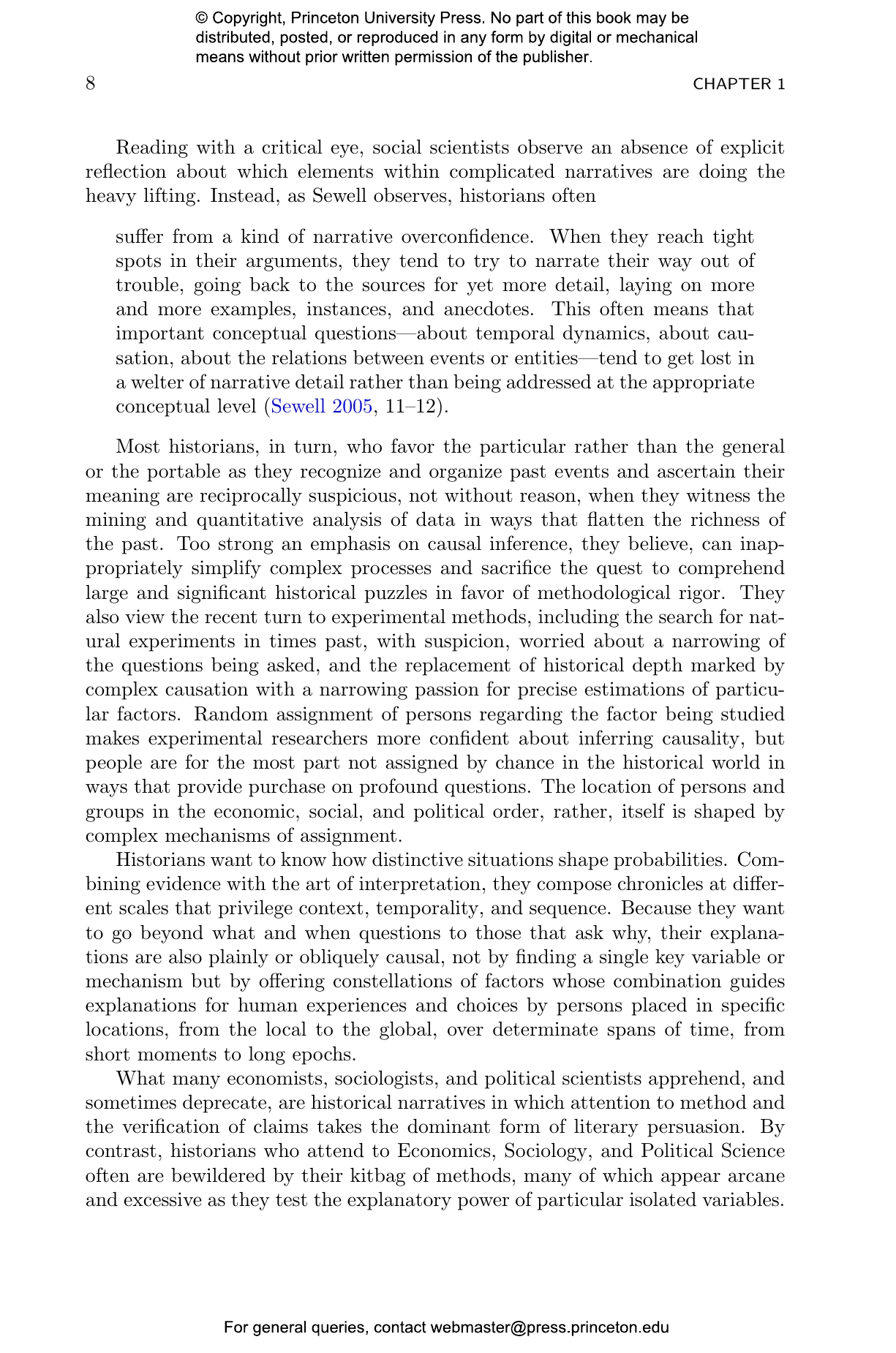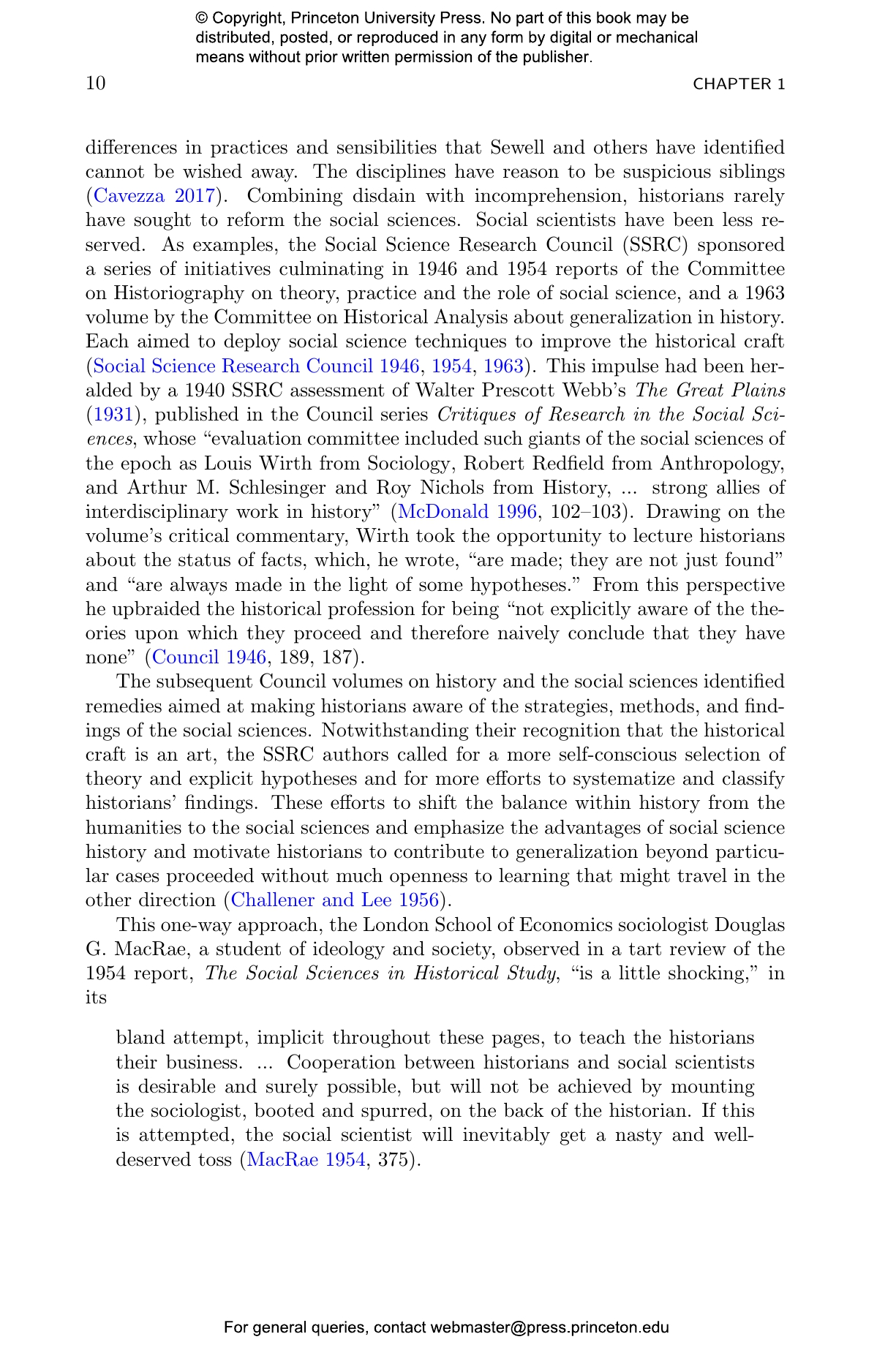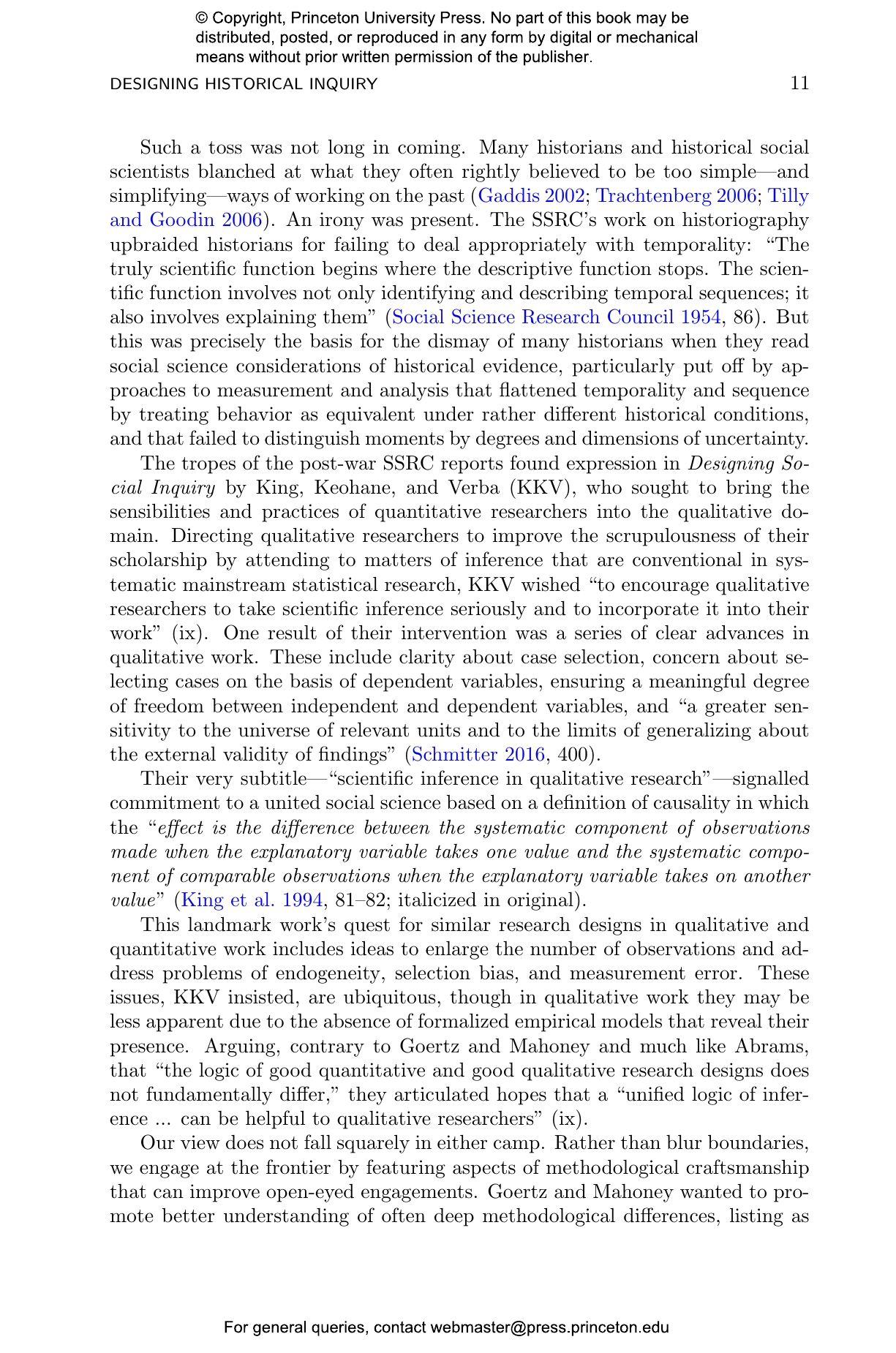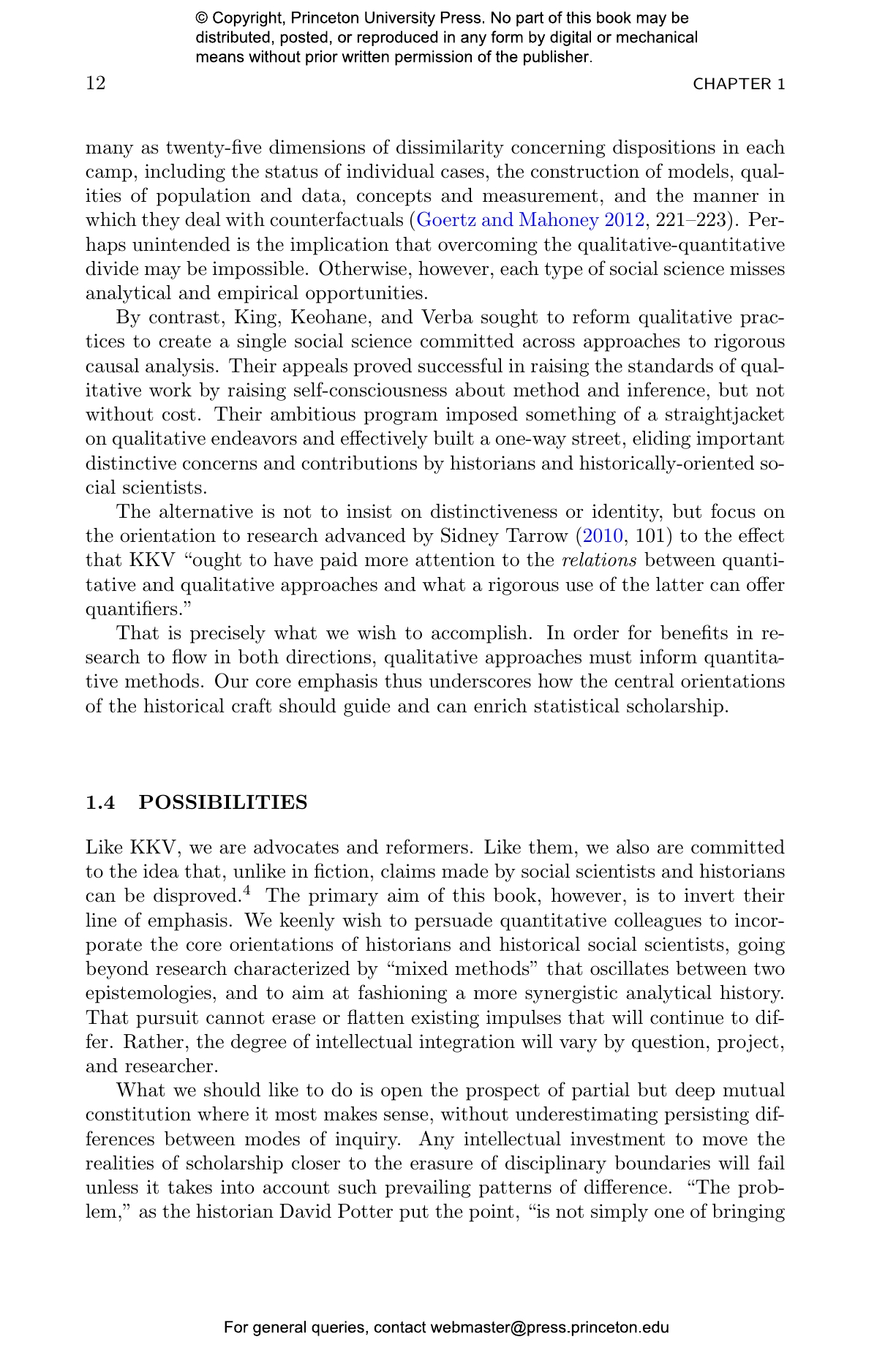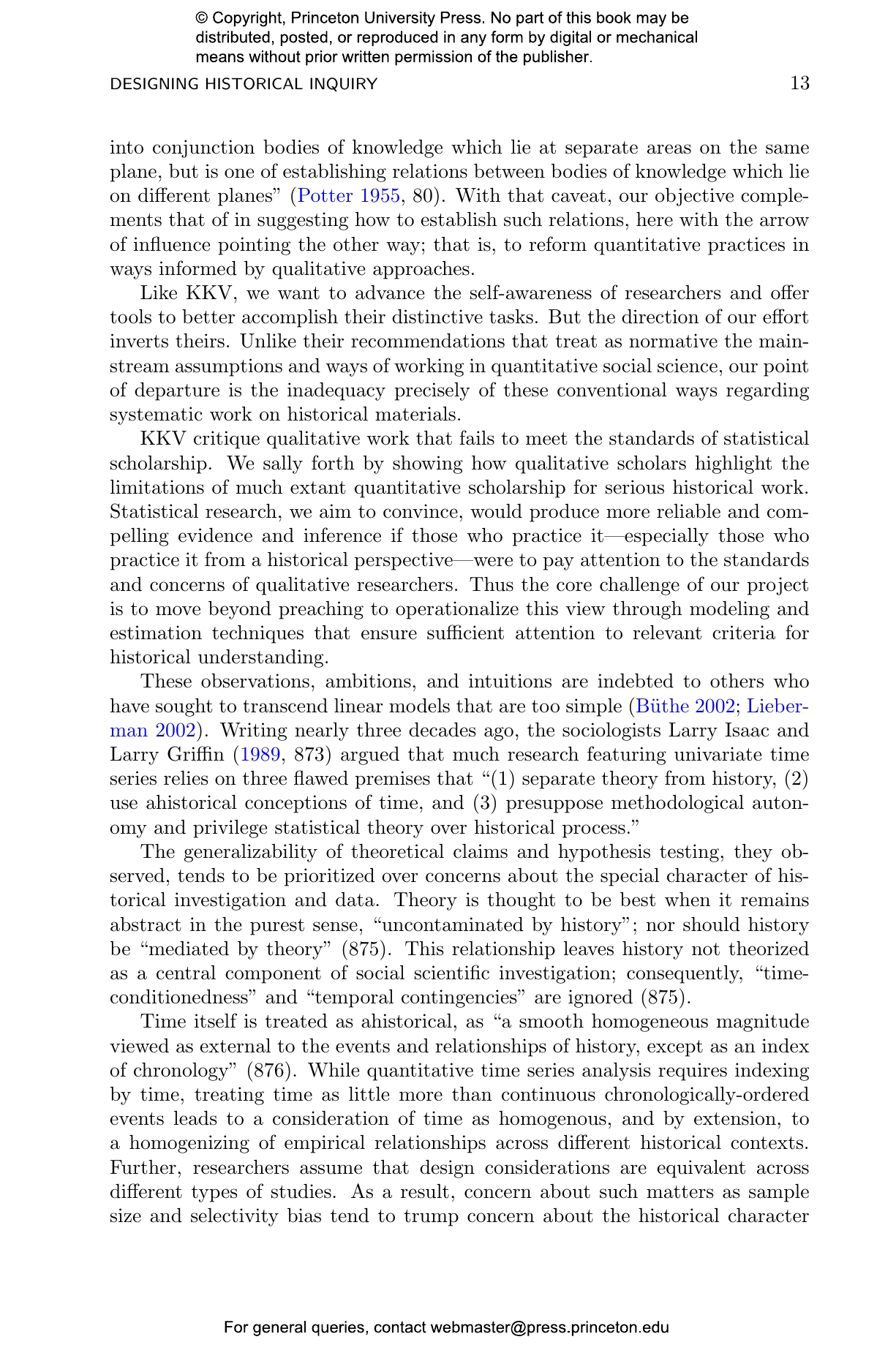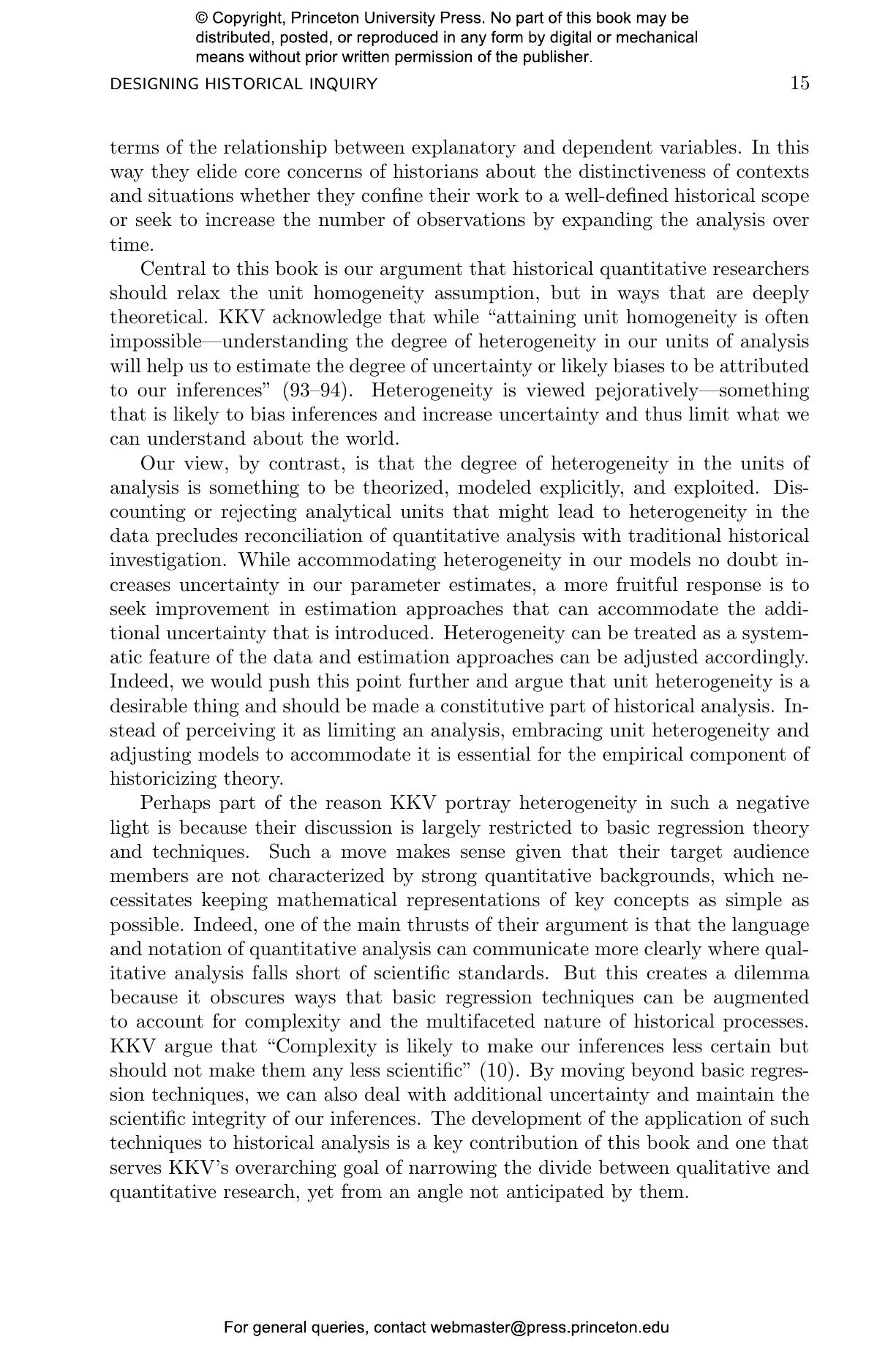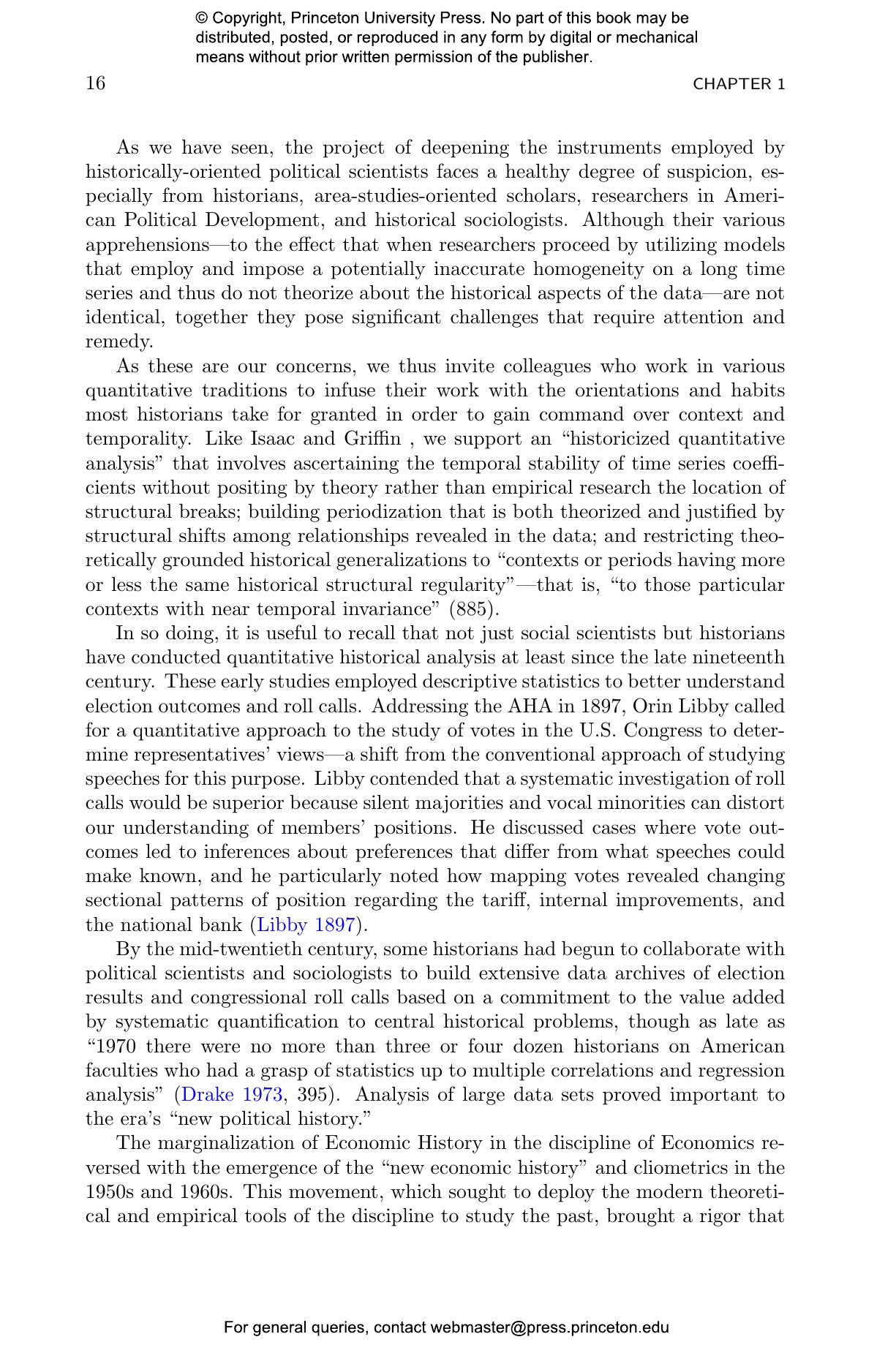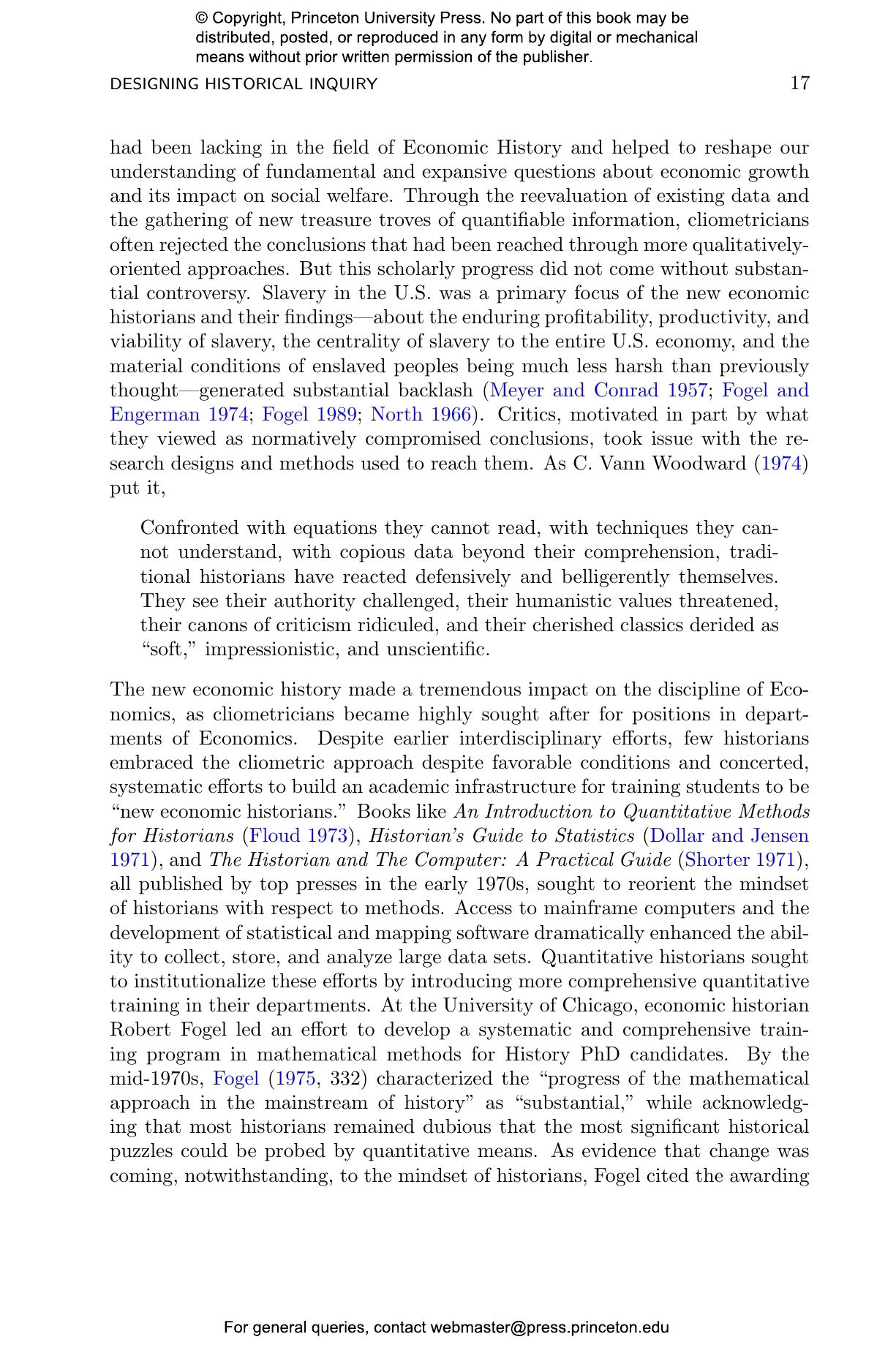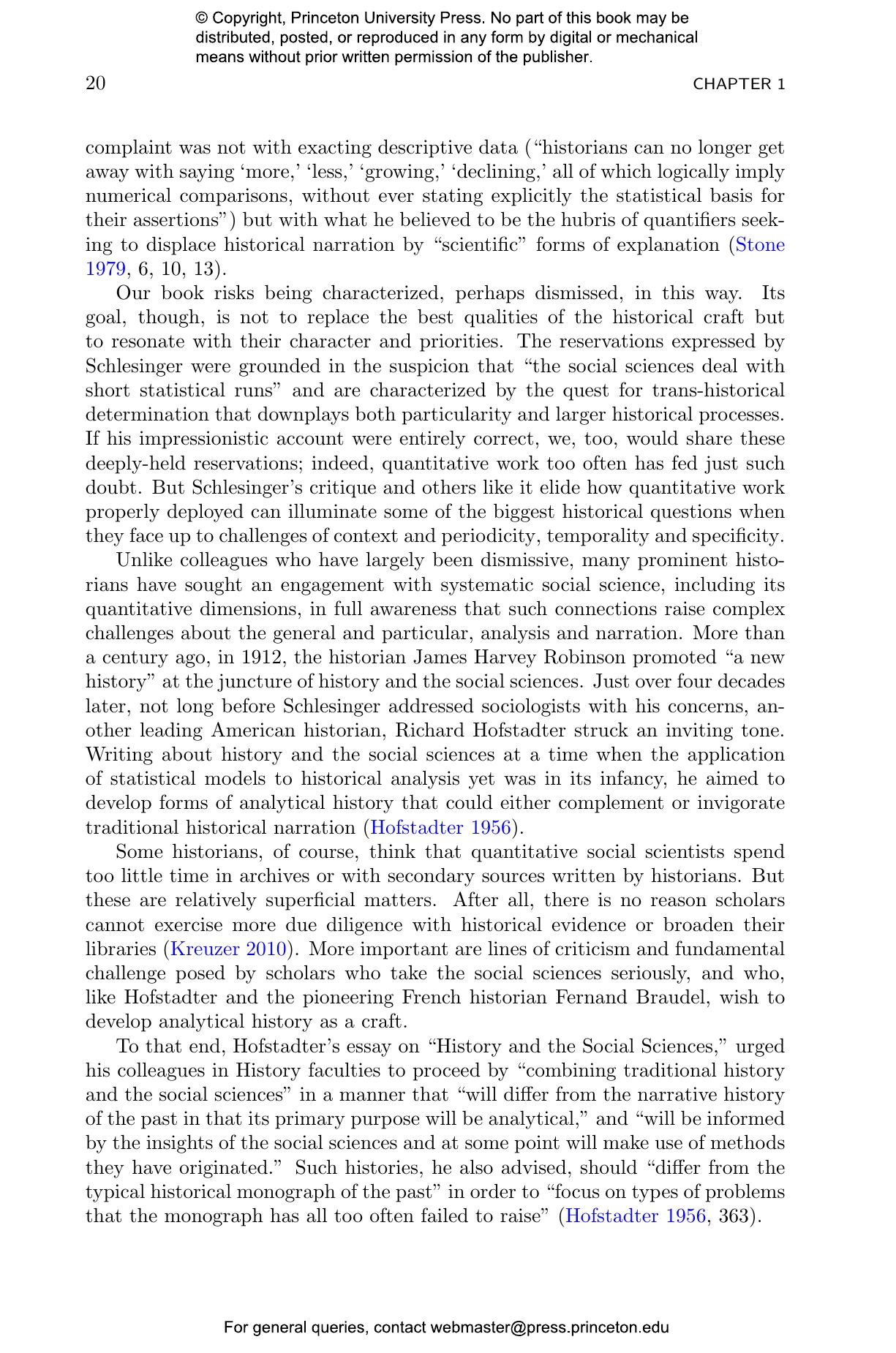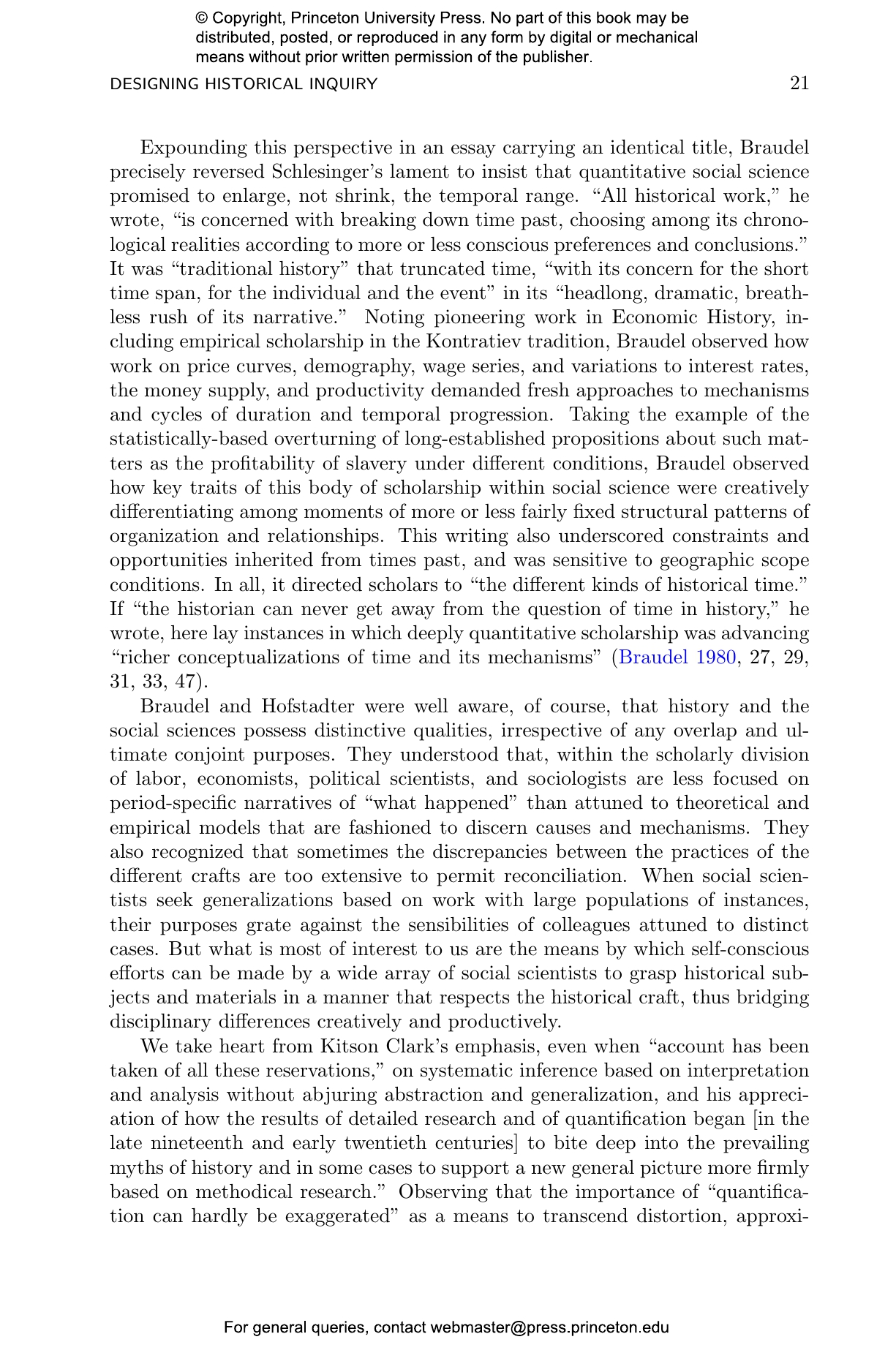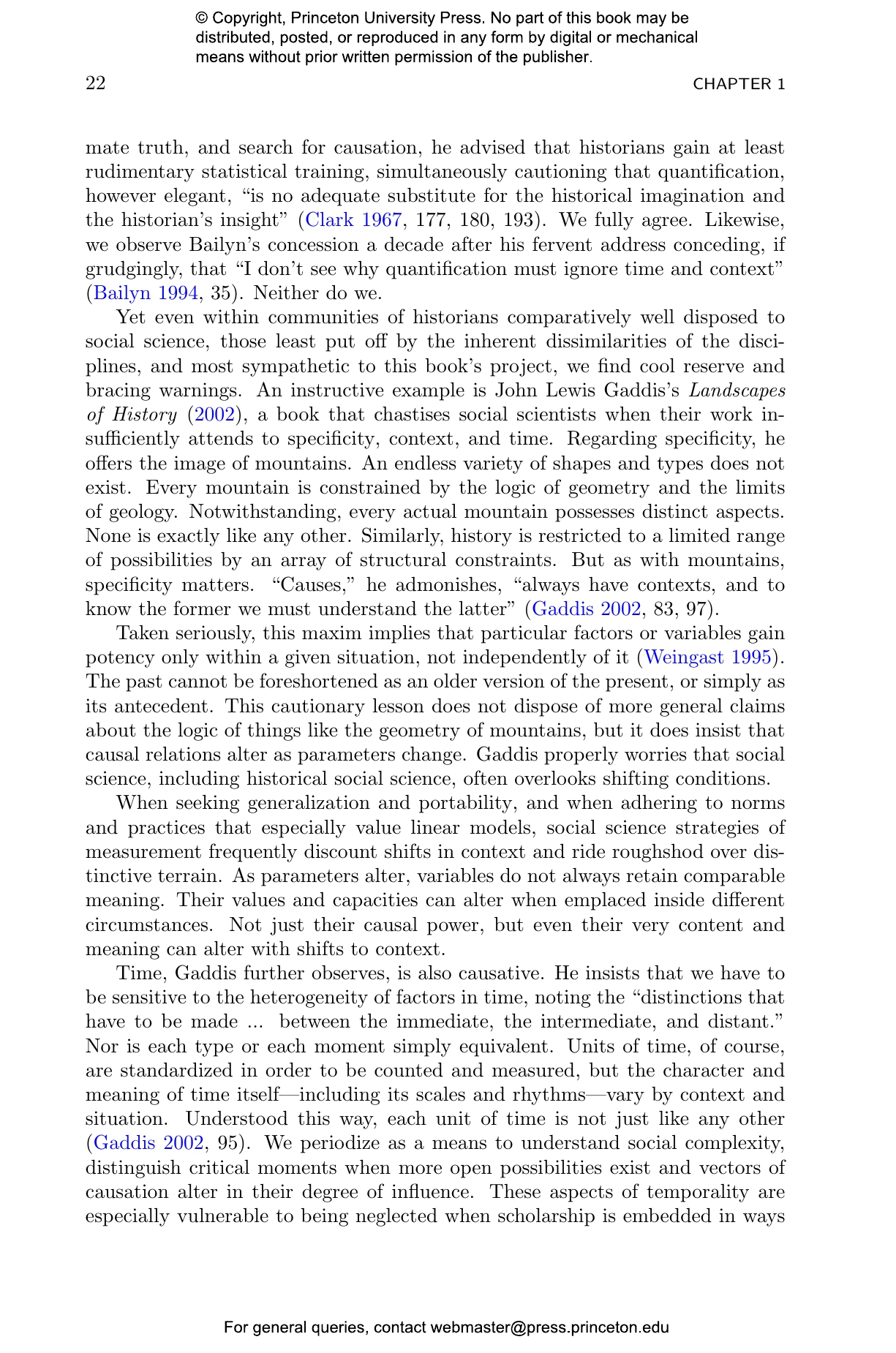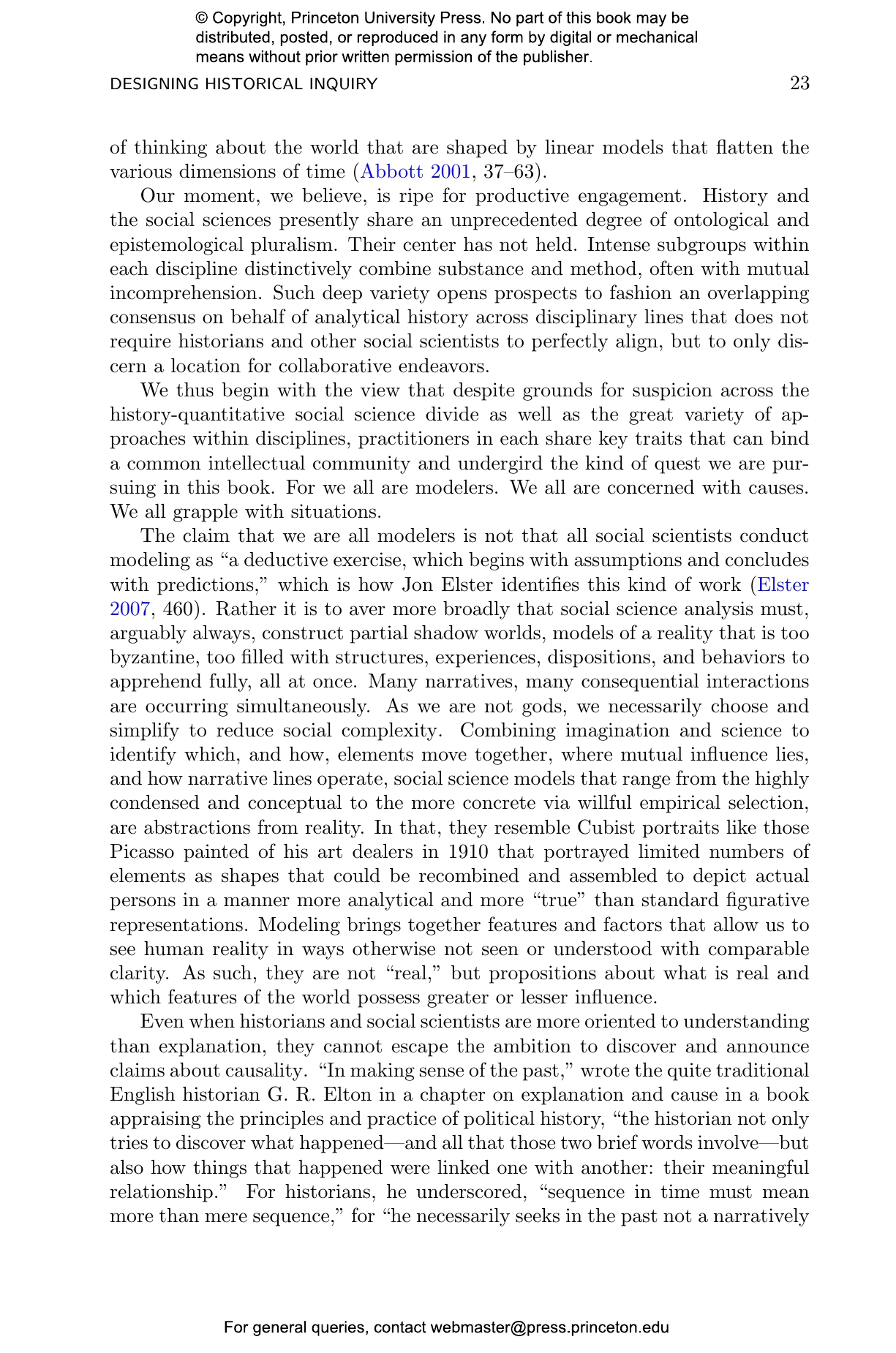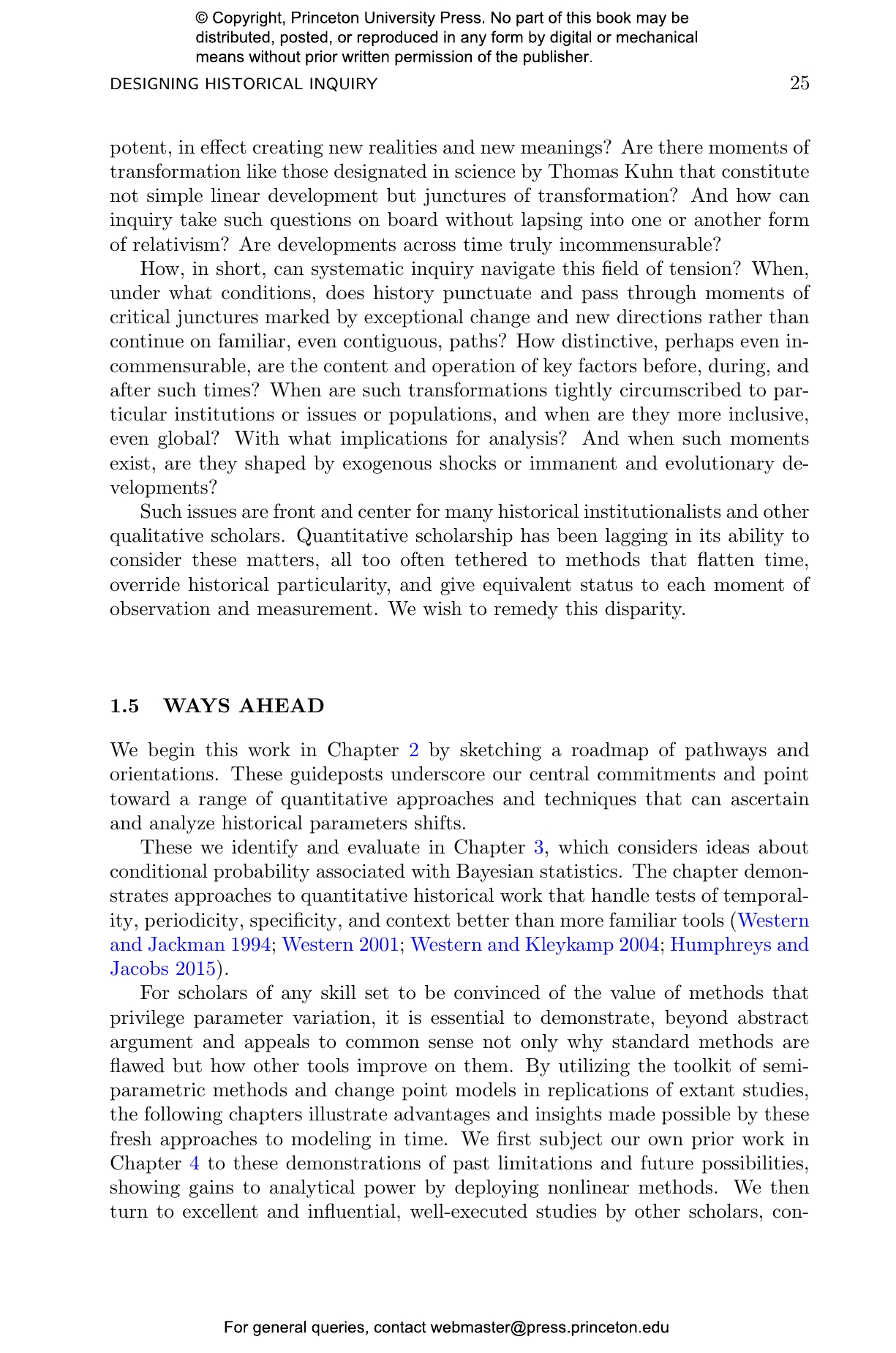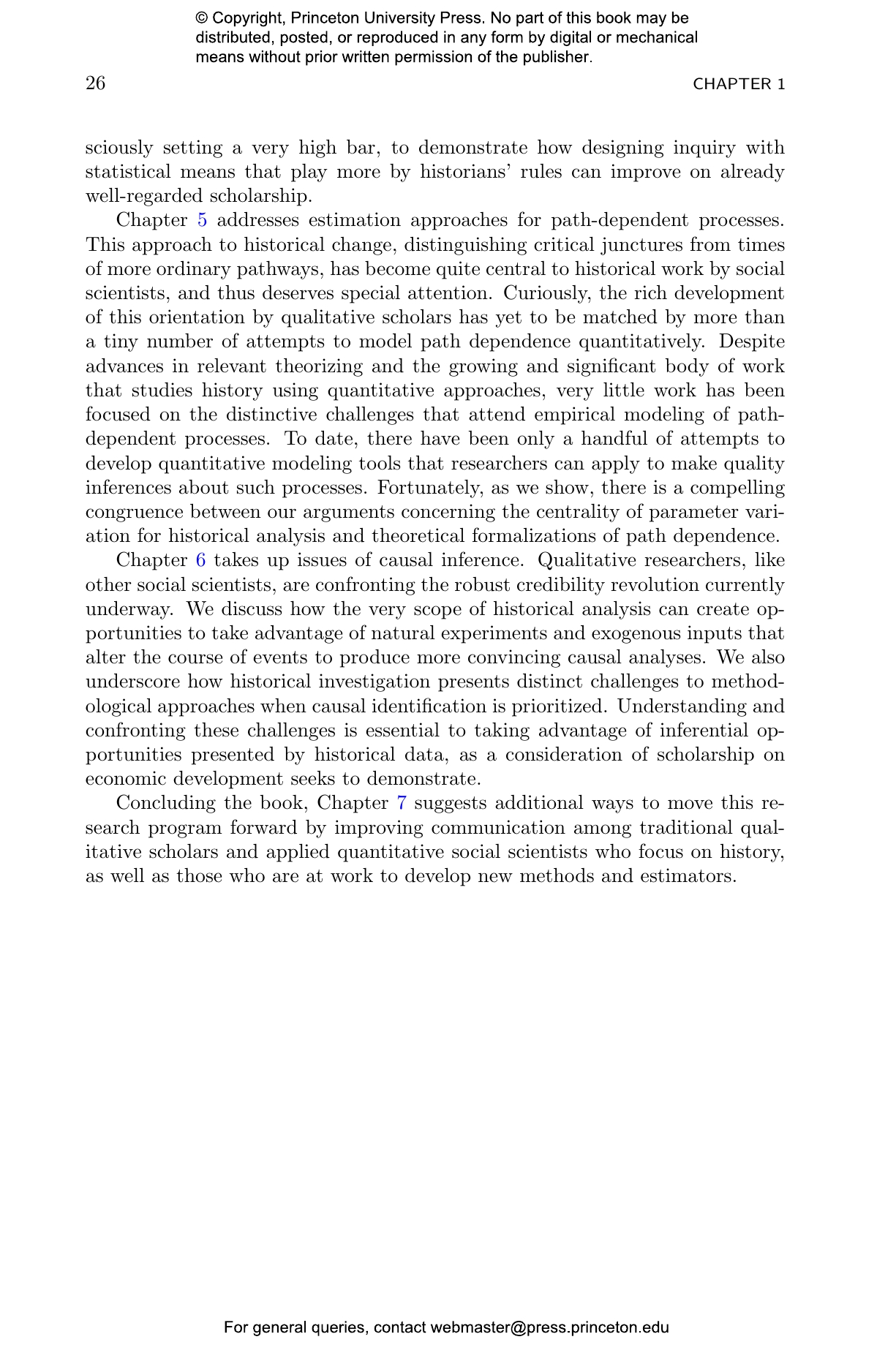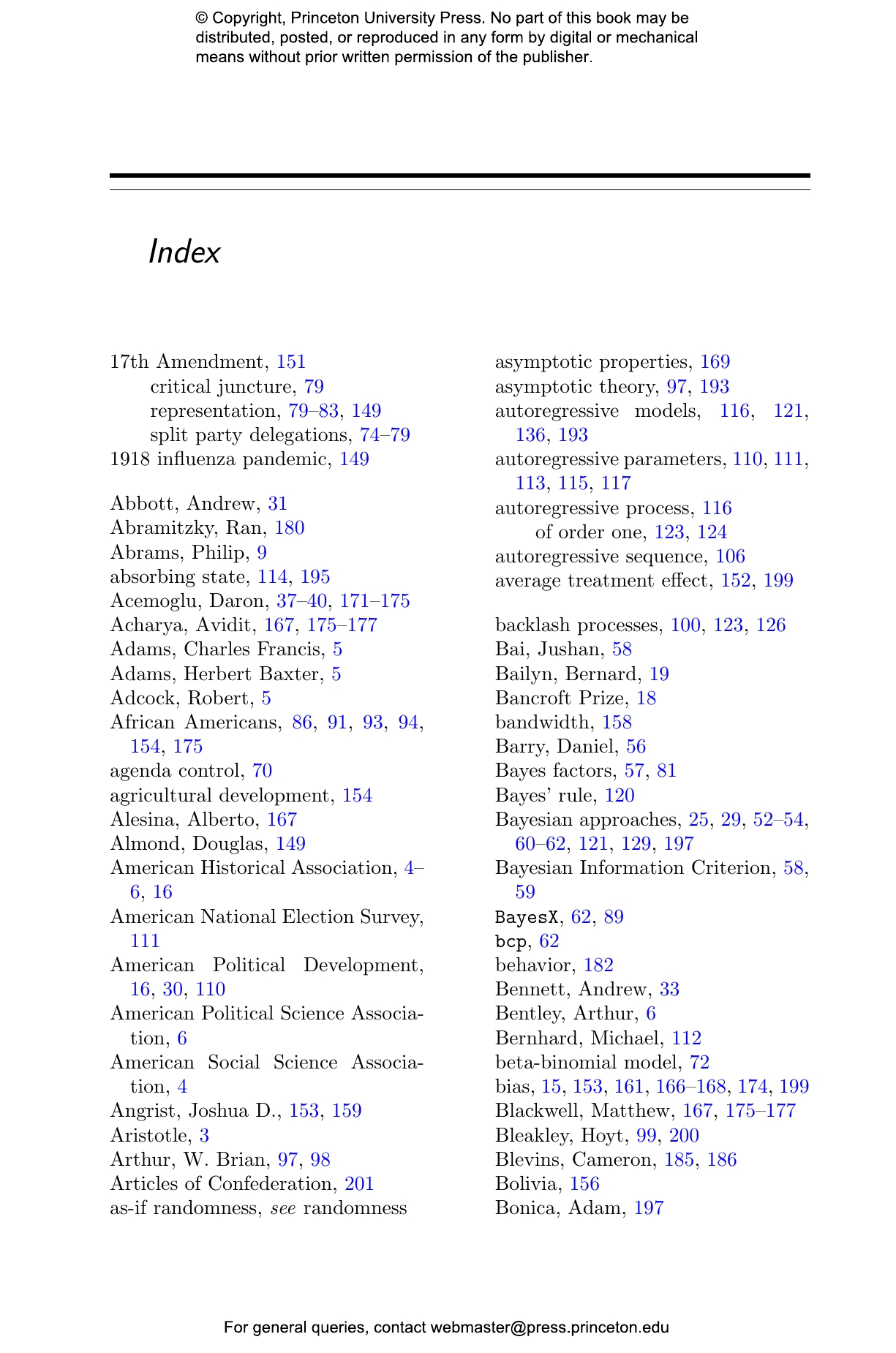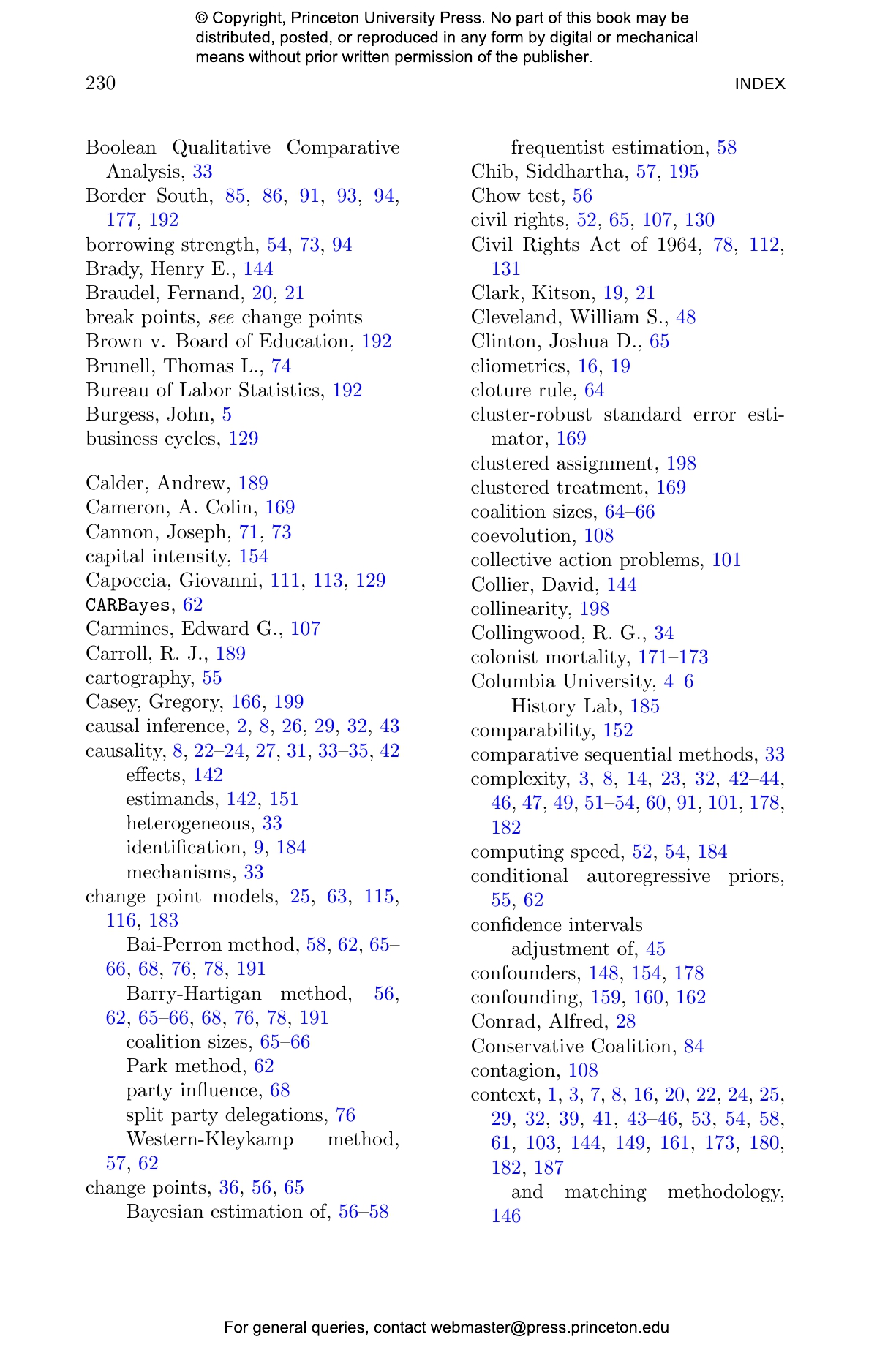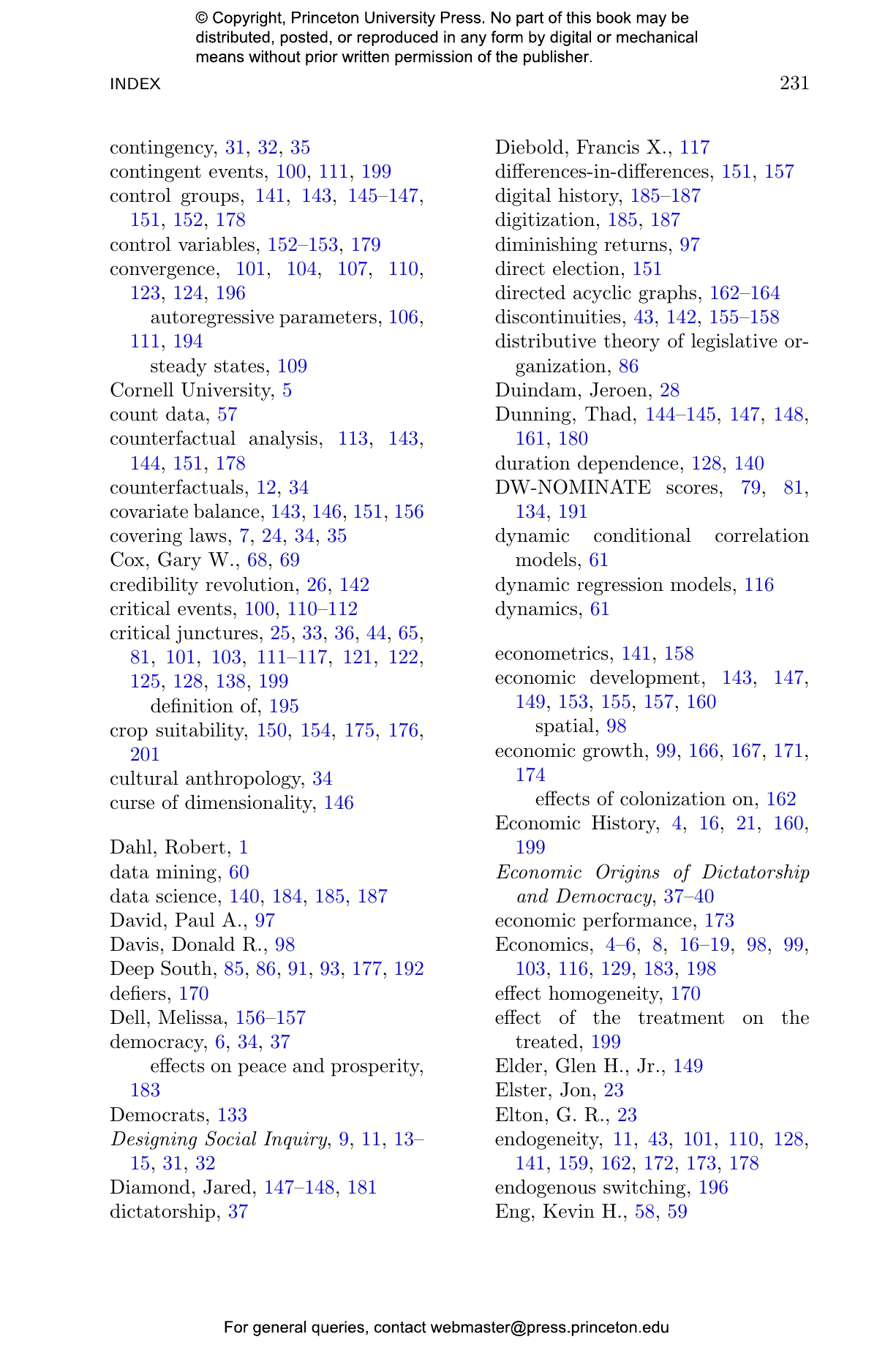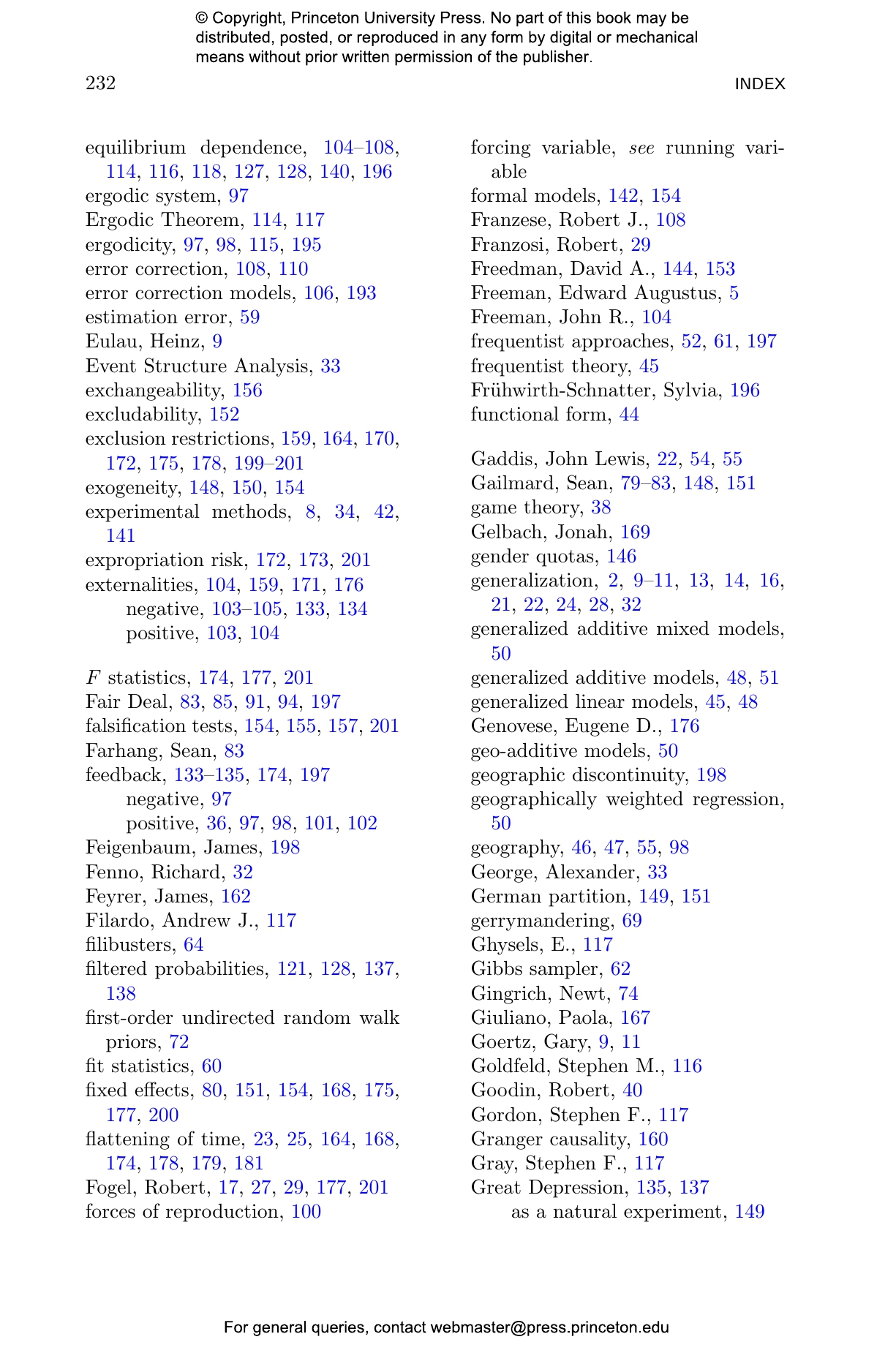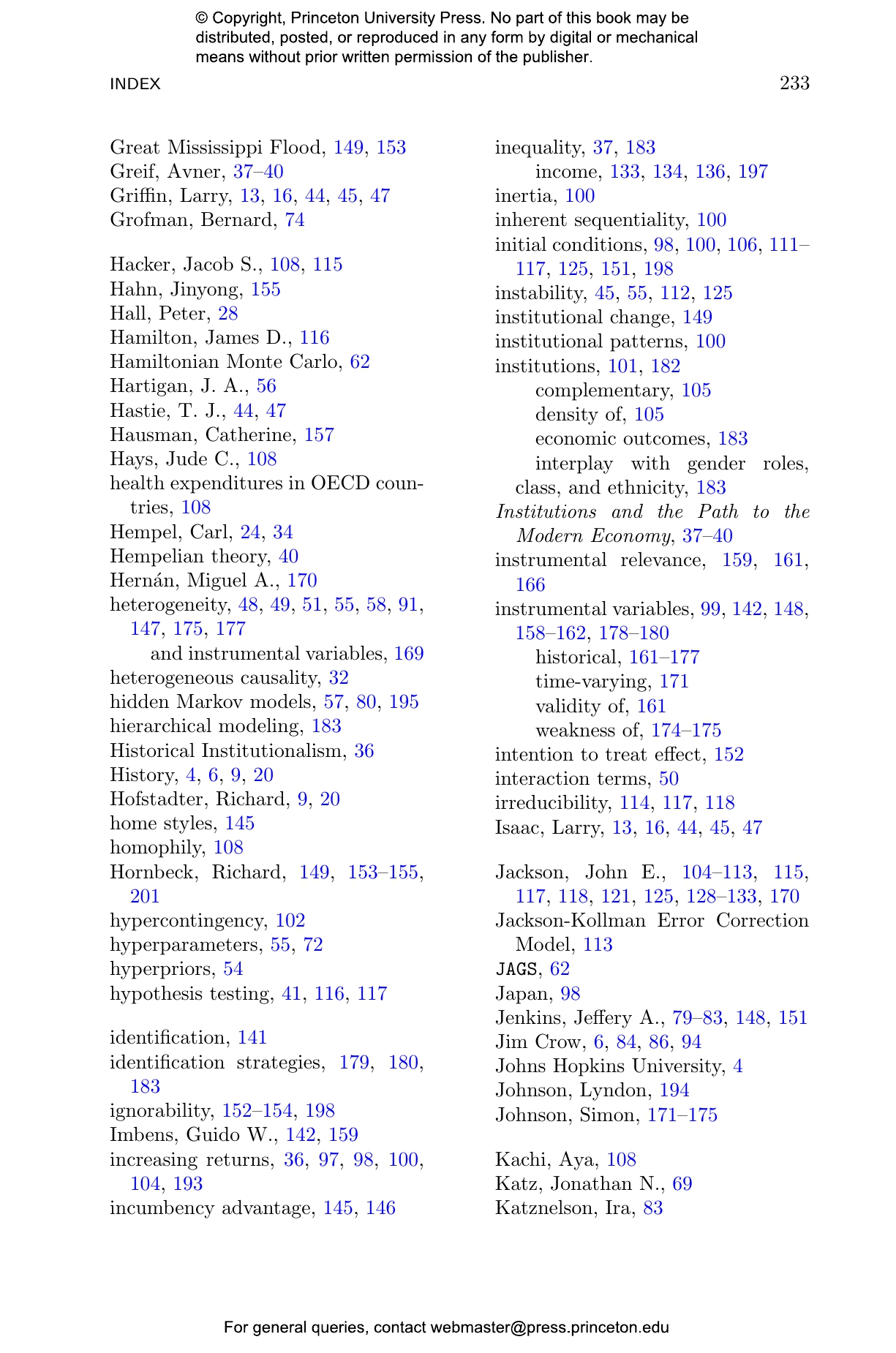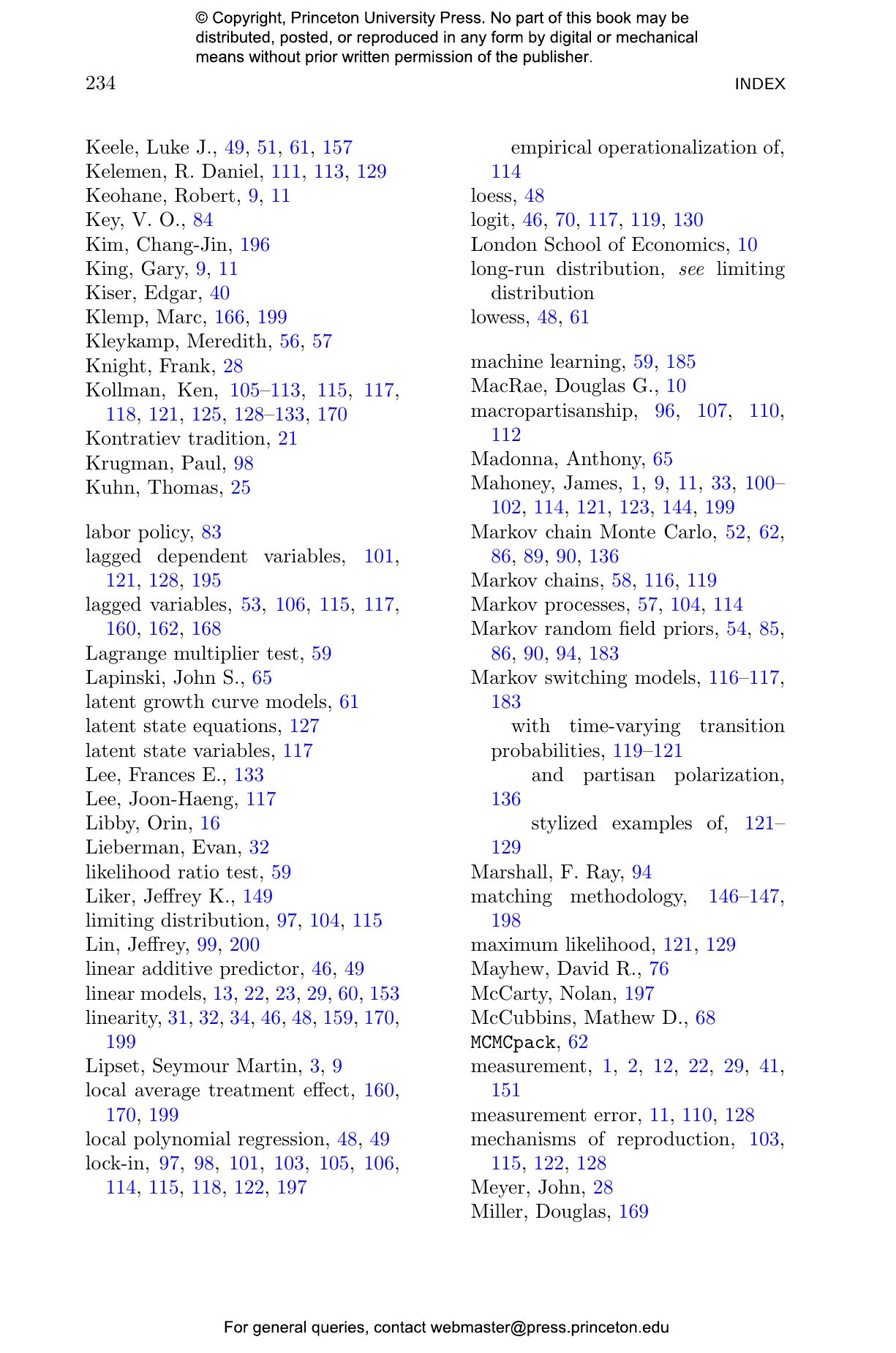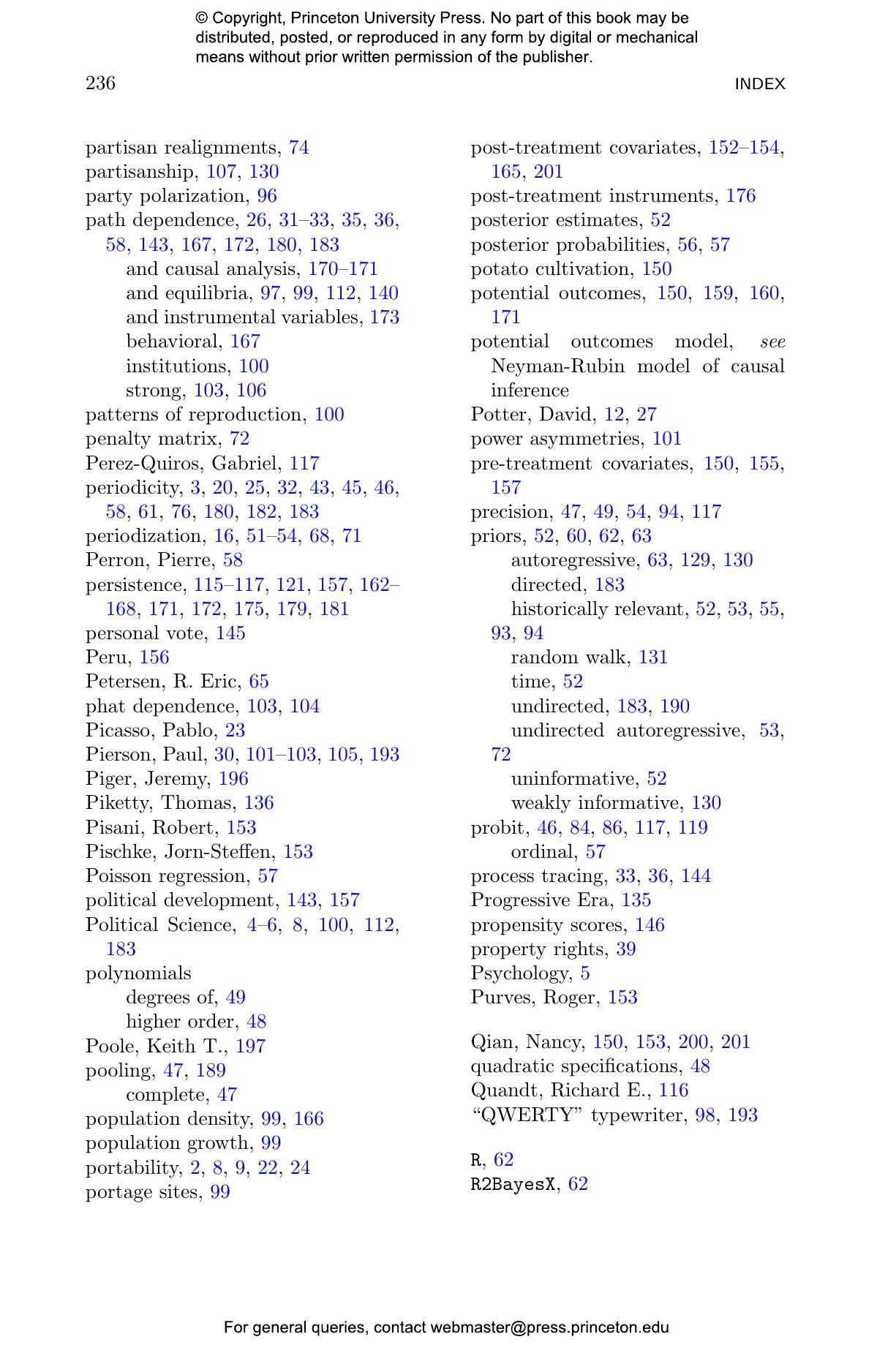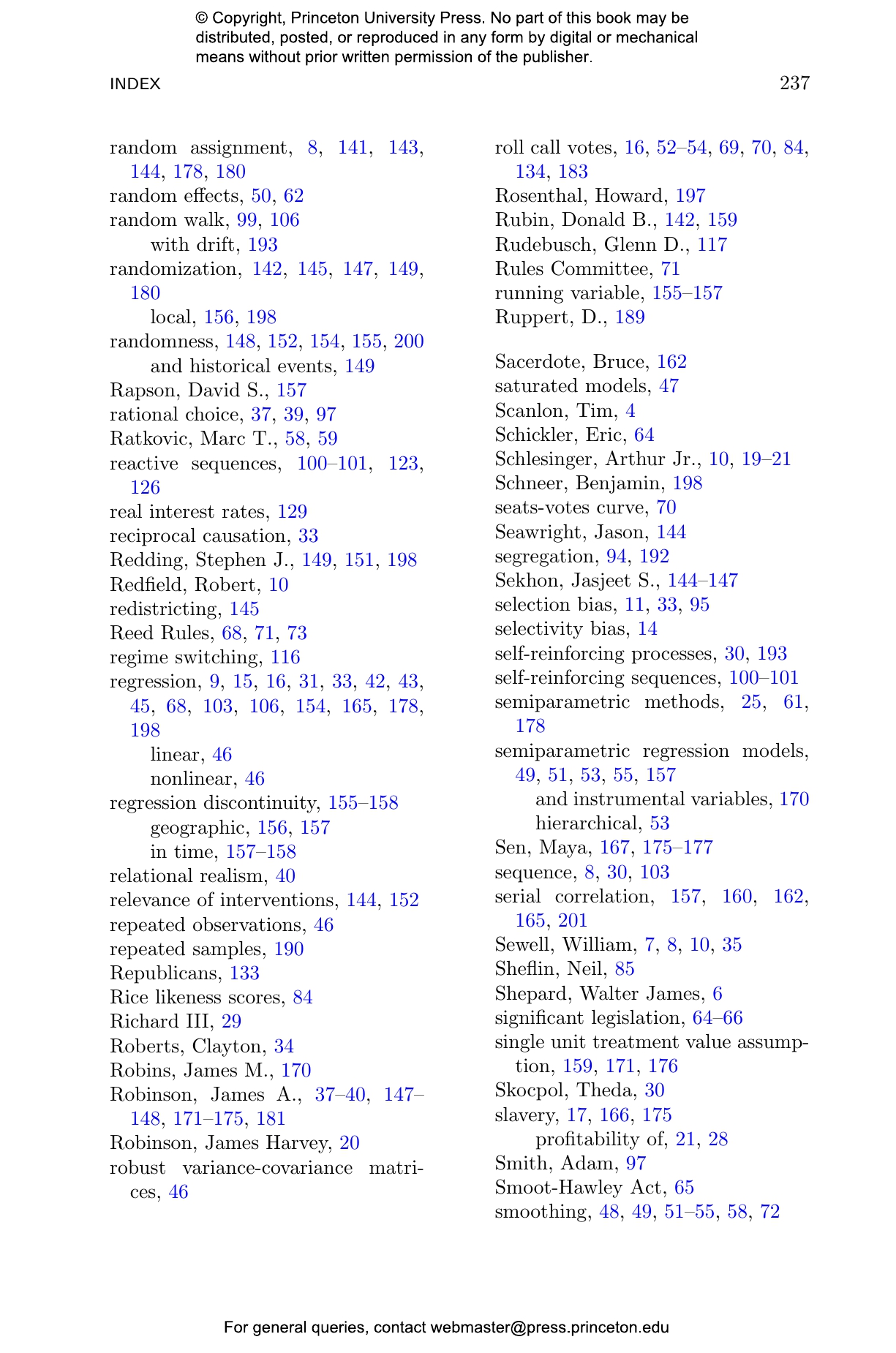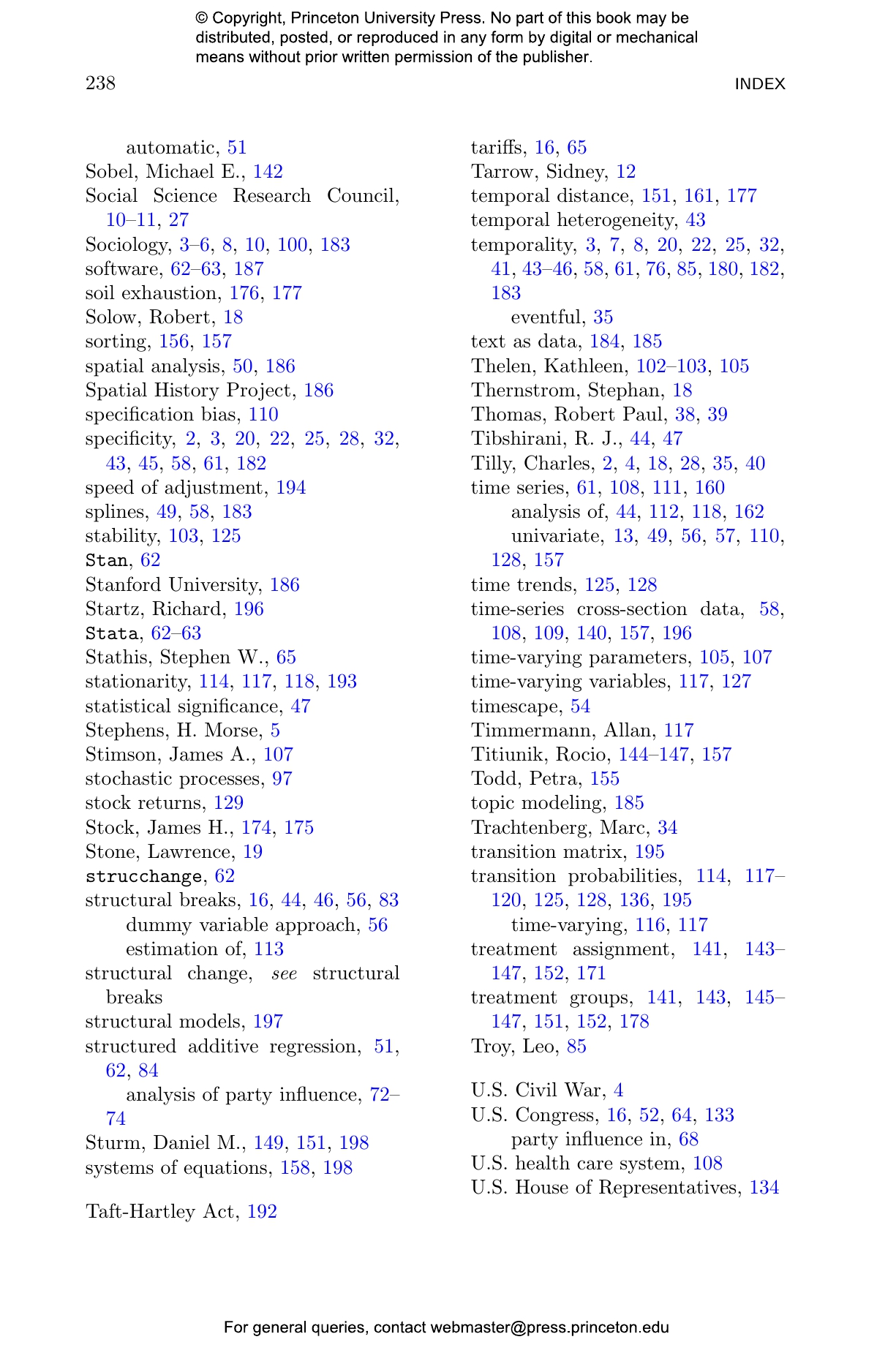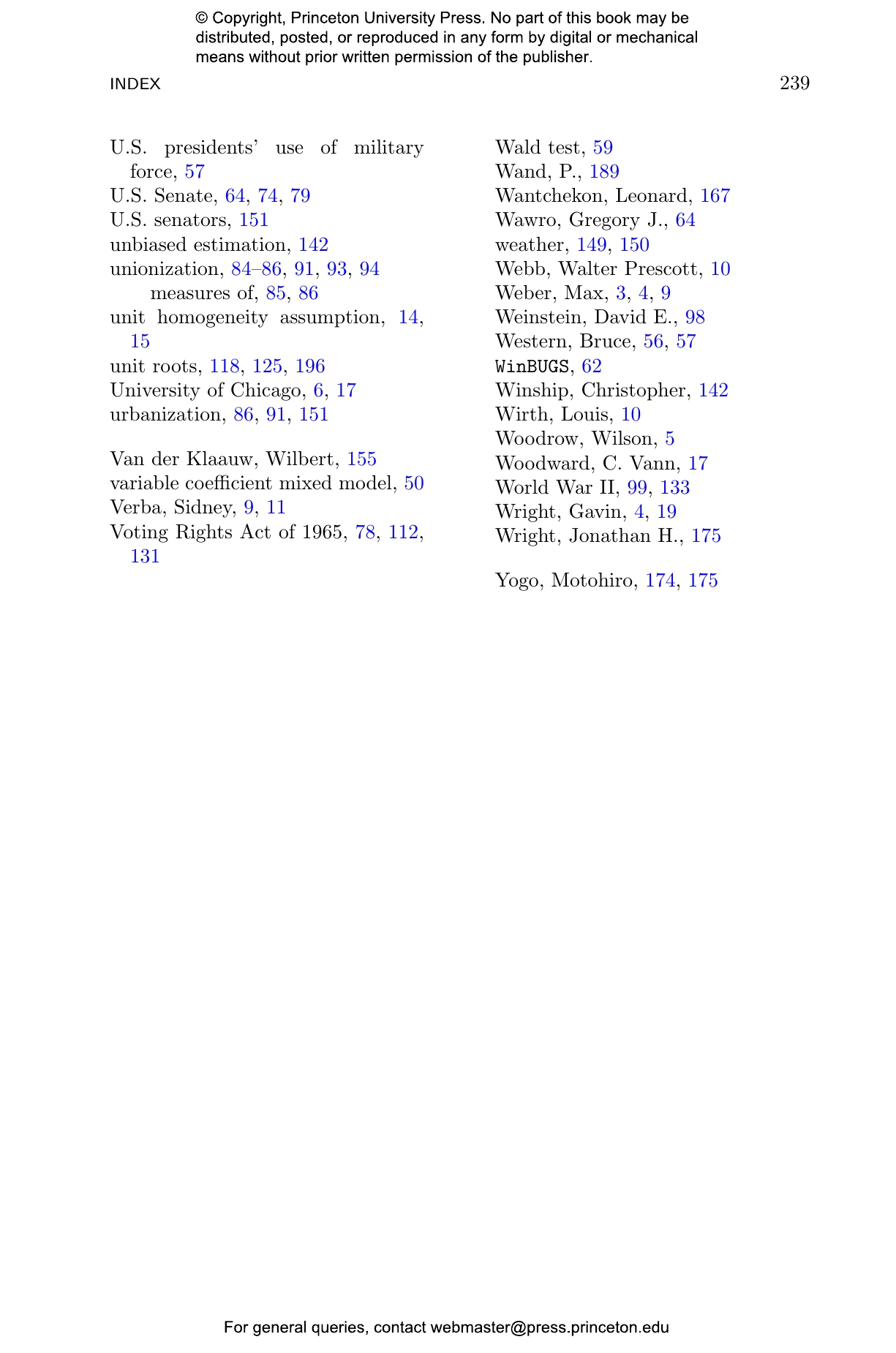Quantitative Analysis for Historical Social Science advances historical research in the social sciences by bridging the divide between qualitative and quantitative analysis. Gregory Wawro and Ira Katznelson argue for an expansion of the standard quantitative methodological toolkit with a set of innovative approaches that better capture nuances missed by more commonly used statistical methods. Demonstrating how to employ such promising tools, Wawro and Katznelson address the criticisms made by prominent historians and historically oriented social scientists regarding the shortcomings of mainstream quantitative approaches for studying the past.
Traditional statistical methods have been inadequate in addressing temporality, periodicity, specificity, and context—features central to good historical analysis. To address these shortcomings, Wawro and Katznelson argue for the application of alternative approaches that are particularly well-suited to incorporating these features in empirical investigations. The authors demonstrate the advantages of these techniques with replications of research that locate structural breaks and uncover temporal evolution. They develop new practices for testing claims about path dependence in time-series data, and they discuss the promise and perils of using historical approaches to enhance causal inference.
Opening a dialogue among traditional qualitative scholars and applied quantitative social scientists focusing on history, Quantitative Analysis for Historical Social Science illustrates powerful ways to move historical social science research forward.
Gregory J. Wawro is professor of political science at Columbia University. His books include Filibuster: Obstruction and Lawmaking in the U.S. Senate. Ira Katznelson is the Ruggles Professor of Political Science and History at Columbia University. His books include Fear Itself: The New Deal and the Origins of Our Time.
- List of Figures
- List of Tables
- Preface and Acknowledgments
- List of Abbreviations
- 1 Designing Historical Inquiry
- 1.1 Conundrums
- 1.2 History and Political Science: A Century of Divergence
- 1.3 Post-War Divisions between History, Economics, Political Science, and Sociology
- 1.4 Possibilities
- 1.5 Ways Ahead
- 2 Quantitative Pathways for Qualitative Purposes
- 2.1 Orientations
- 2.2 Analytical History: Two Modes
- 2.3 Identifying a Middle Range
- 3 Methods
- 3.1 Methodological Issues
- 3.2 Semiparametric Methods
- 3.3 Change Point Models
- 3.4 Important Concerns
- 3.4.1 Adjudicating between simple and more complex models
- 3.4.2 Imposing less structure is not atheoretical
- 3.5 Conclusion
- 4 Congressional Demonstrations
- 4.1 Coalition Sizes, Agenda Change, and Supermajority Rules in the U.S. Senate
- 4.2 Party Power in the U.S. House of Representatives
- 4.3 Realignment, the 17th Amendment, and Split Party Delegations in the Senate
- 4.4 The 17th Amendment and Representation
- 4.5 Sectionalism and Labor Policy in the New Deal and Fair Deal Periods
- 4.6 Conclusion
- 5 Path Dependence
- 5.1 Path Dependence in Economics
- 5.2 Contingency and Deterministic Patterns
- 5.3 Positive Feedbacks
- 5.4 Stability through Change
- 5.5 Sequence, Externalities, and Path Dependence
- 5.6 Empirical Modeling of Path Dependence
- 5.7 Alternative Approaches to Modeling Path Dependence
- 5.8 Critical Junctures and Initial Conditions
- 5.9 Markov Switching Models with Time-Varying Transition Probabilities
- 5.9.1 A representative MSM-TVTP model
- 5.9.2 Stylized examples of MSM-TVTP indicating path dependence
- 5.10 Replication of Path Dependence and Macropartisanship
- 5.11 Path Dependence and Partisan Polarization
- 5.12 Conclusion
- 6 Natural Experiments, Causality, and Historical Analysis
- 6.1 Randomness, Counterfactuals, and Comparisons for Causal Inference
- 6.2 Opportunities and Challenges
- 6.3 Historical Events and Causal Leverage
- 6.3.1 Extreme weather events and economic development
- 6.4 Discontinuities
- 6.5 Instrumental Variables
- 6.6 Persistence
- 6.6.1 Potential problems with standard errors
- 6.6.2 Multilevel concerns
- 6.6.3 Path dependence and causal analysis
- 6.6.4 A closer look at two studies featuring historical IV estimation
- 6.7 Discussion
- 7 Conclusion
- Notes
- Bibliography
- Index
"[A] major new book…all political scientists stand to learn from this balanced and nonpolemical effort to reorient quantitative analysis for historical social science."—James Mahoney, Perspectives on Politics
“This accessible book bridges history and other social science disciplines, where methods of statistical analysis can be leveraged to enhance the work of historians and historical social scientists. Meeting readers where they are, Wawro and Katznelson take those who are the most comfortable with statistics and move them to qualitative realms and vice versa. The content is perfectly organized.”—Janet Box-Steffensmeier, coauthor of Times Series Analysis for the Social Sciences
